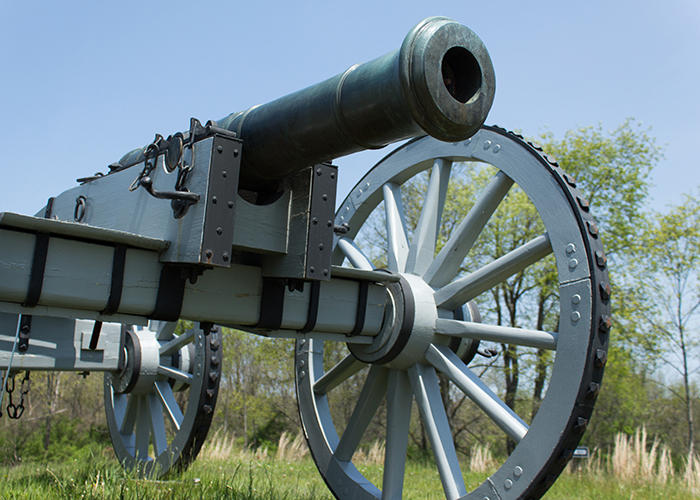 Previous Day |
Albany, NY → New York City 270.0 mi (434.5 km) |
 Next Day |
Excelsior, everyone!
That’s New York’s state motto, and it means “Higher,” exactly what went through my mind as I stared up at the magnificent Empire State Capitol in Albany. I had spent the night in the shady Scottish Inn up the street and was more than eager to get out and explore on my second day in New York! While all the government officials bustled about on their way to work, I set out to explore the inside of this remarkable, castle-like statehouse!
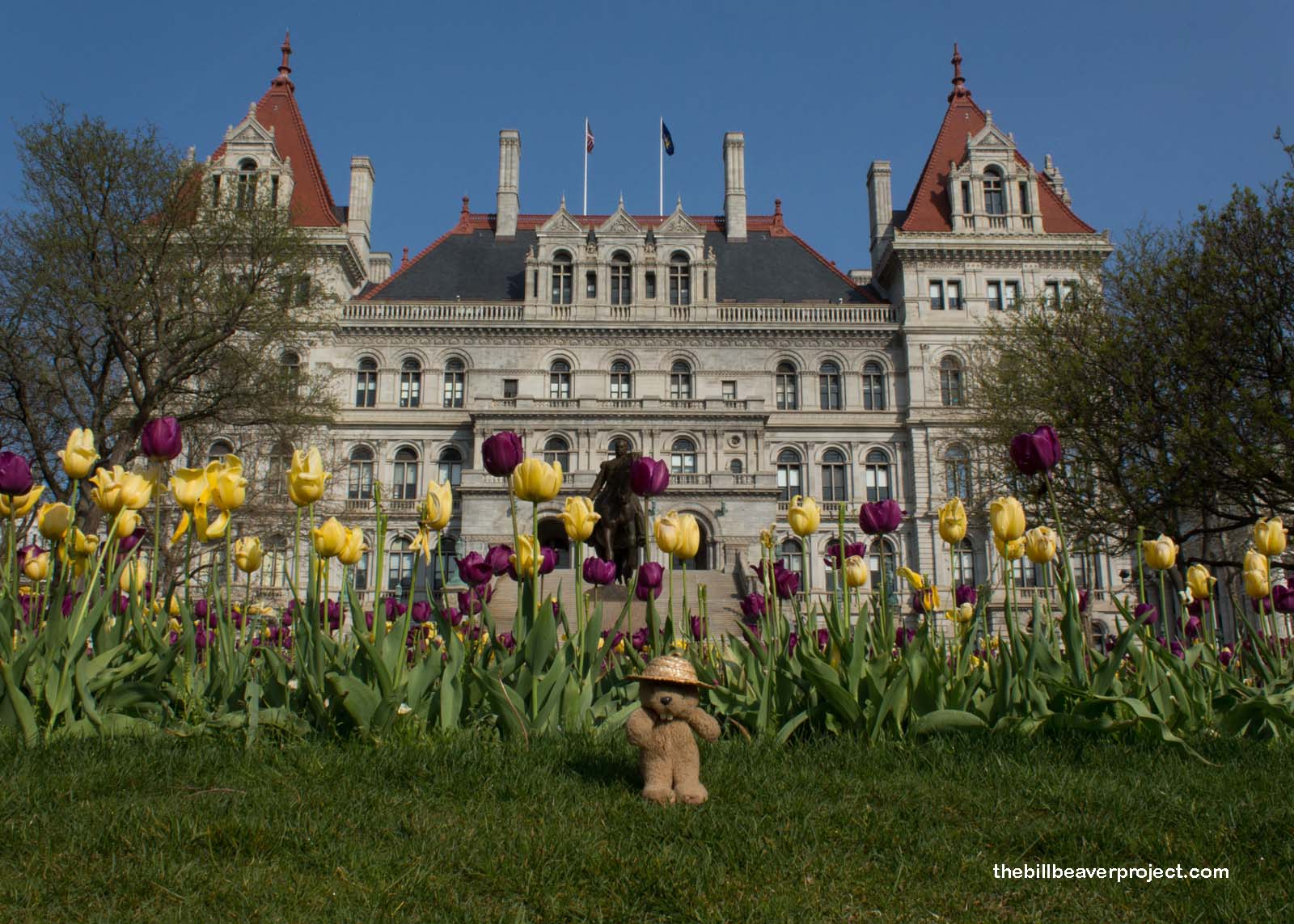 |
This was very much build-and-revise building, taking over 25 years and $25 million to build, with five architects at the helm. During construction, electrical lighting became an option, and ventilation had to be added to its thick, masonry walls! Then, it had to deal with a roof collapse in 1888 and a State library fire in 1911 to the point that it was declared “done enough” and could be added to by future generations!
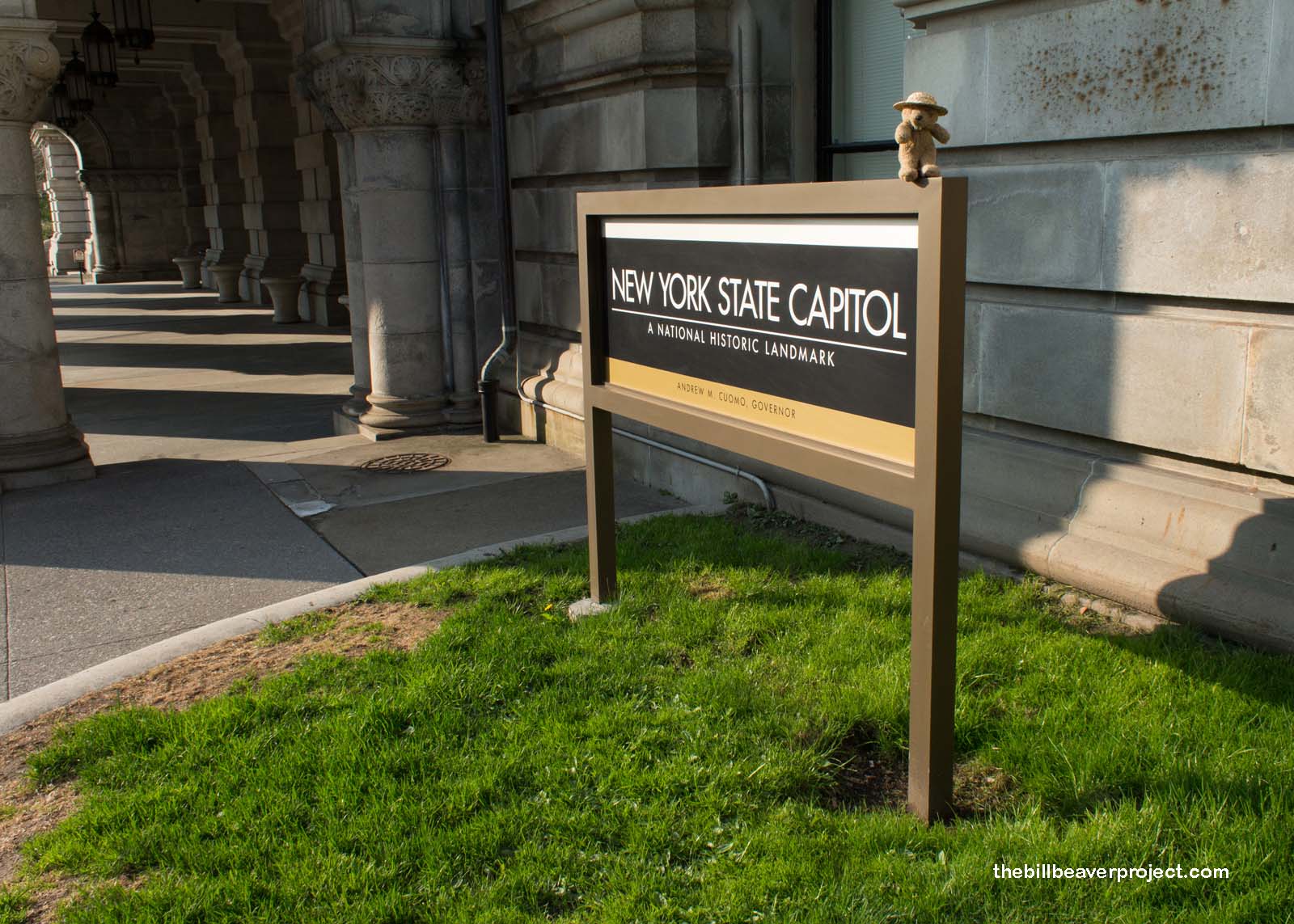 |
Today, the inside is just as storied as its outside! This capitol building is home to the largest collection of state battle flags in the country, over 2100 of them, thanks to contributions from the New York National Guard since the Civil War!
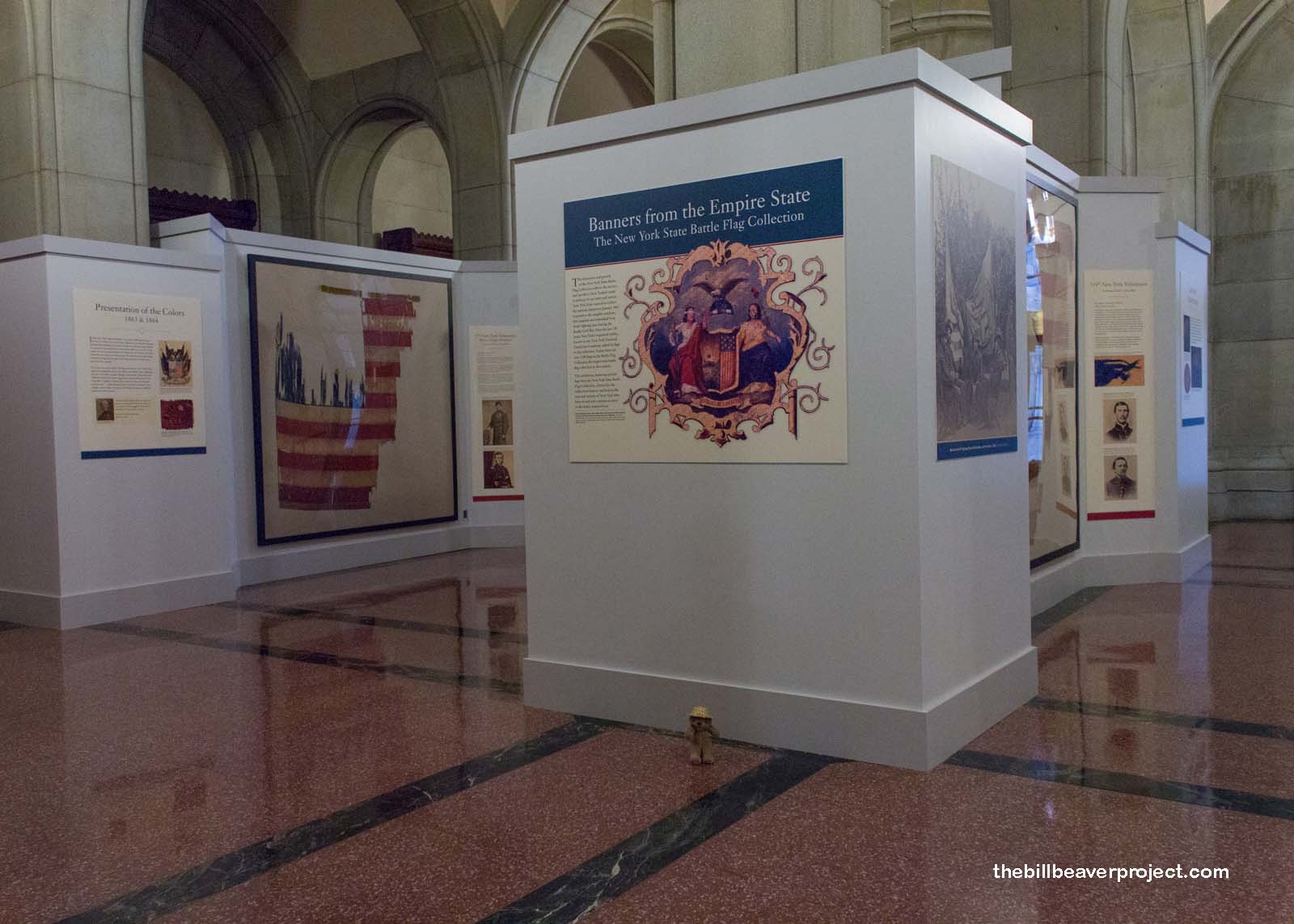 |
These flags have been lovingly restored, some from tatters, with the creators’ original signatures and other symbols from the period stitched in. Sadly, only a fraction can be displayed at a time, and most of the flags are rolled up in cabinets, maybe never to be unfurled again! They are surrounded by military uniforms spanning from the Civil War to the War in Iraq, including a matching set of a father’s World War I pilot vest and the vest his son wore in World War II. This one kept me looking for quite a while!
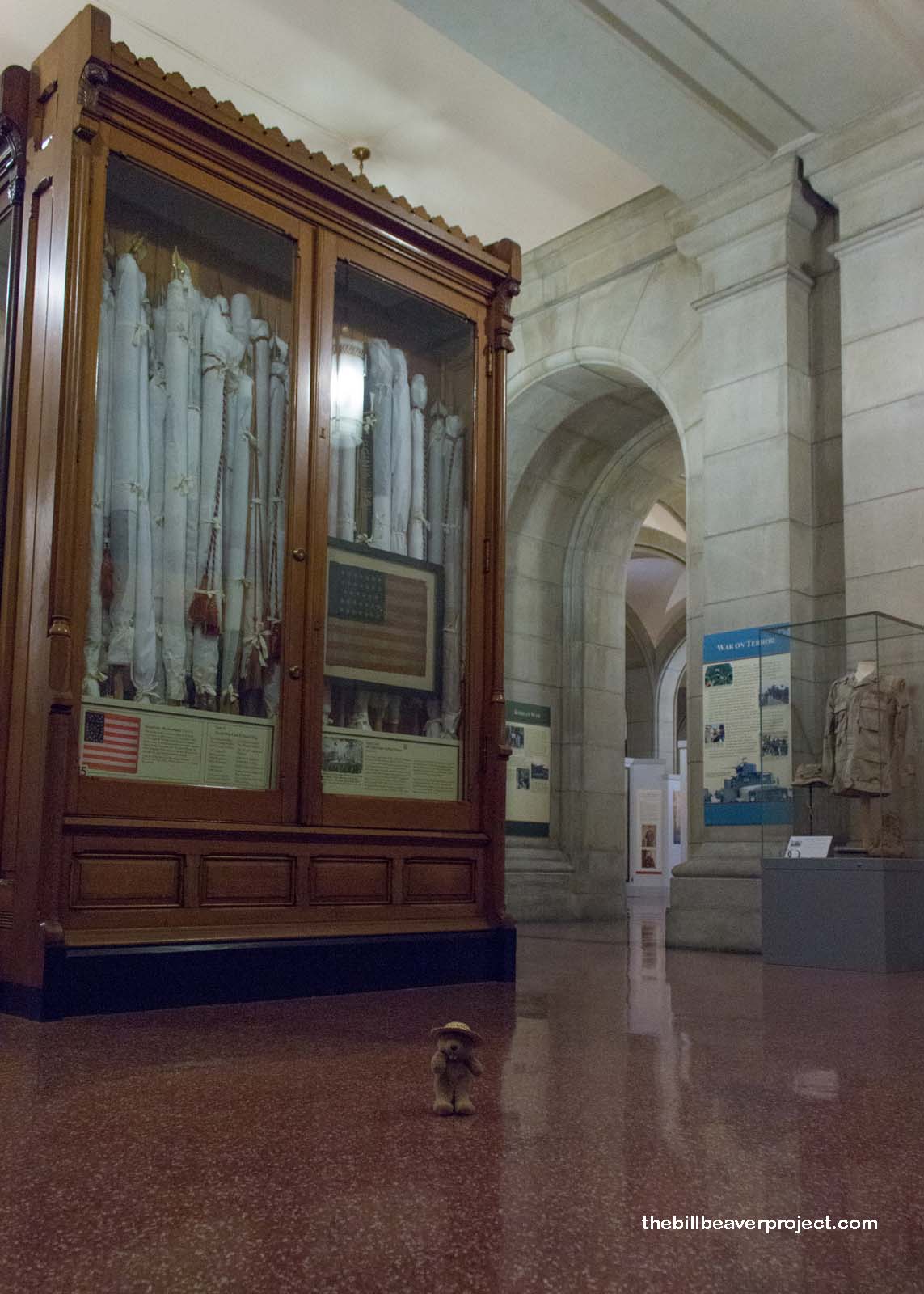 |
My next stop in the capital was the Great Western Staircase, also called the “Million Dollar Staircase,” because it cost over a million dollars ($28 million by today’s standards) to build! It took 500 stonecutters and carvers 14 years, at a wage of $5 a day, to create this stunning staircase, which not only features the intricately carved faces of presidents and historical figures, but also the faces of workers’ family members and even strangers they met on the street! Just imagine walking up and down this staircase every day at work!
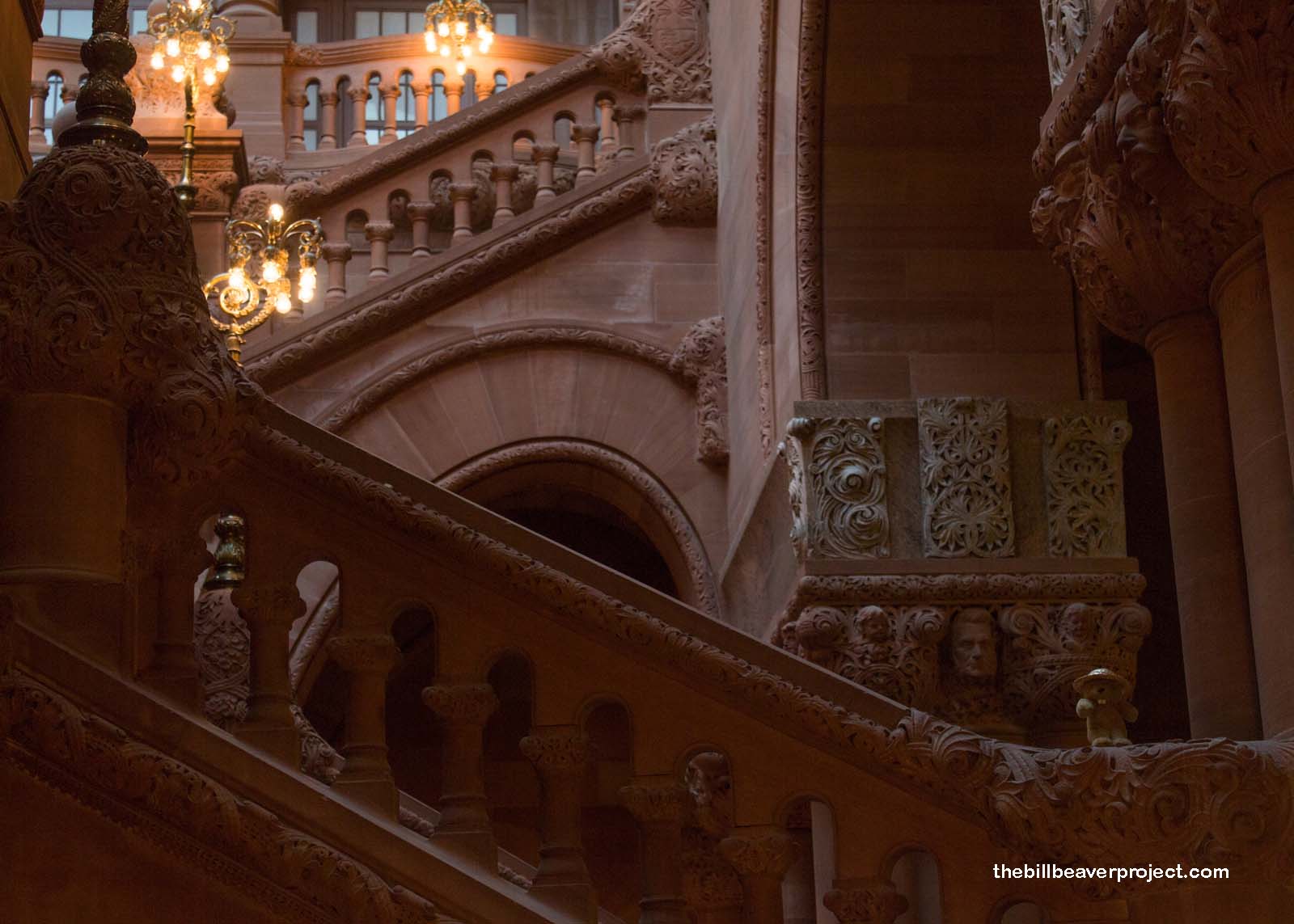 |
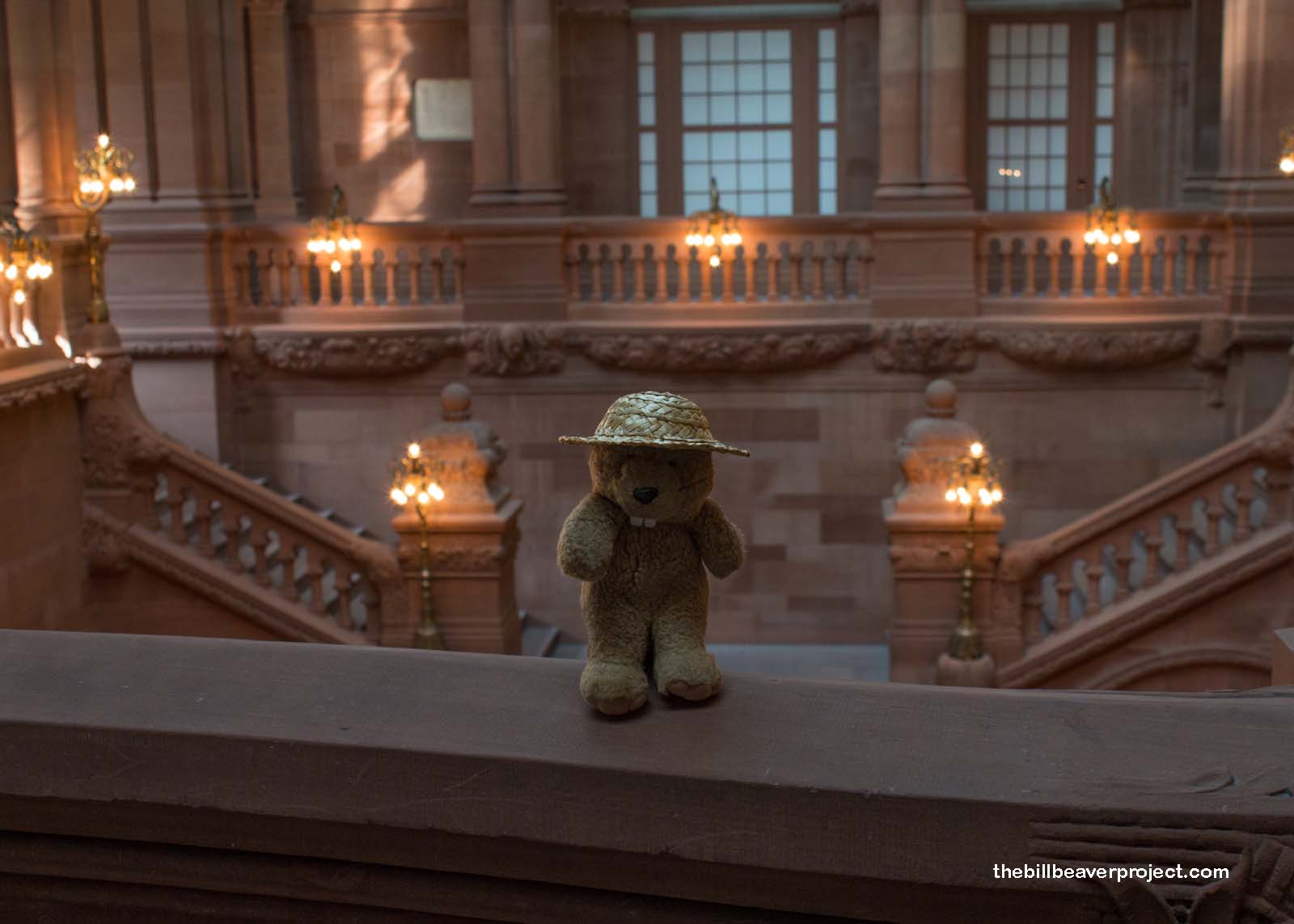 |
Truthfully, I spent more time marveling at the Capitol’s architecture than I’d planned, so I had to add some hustle in order to properly enjoy my next destination, one of the most important in the American Revolution: Saratoga National Historical Park! What made it so important? The American victory here brought France, and all its military supplies and personnel, into the war against Britain!
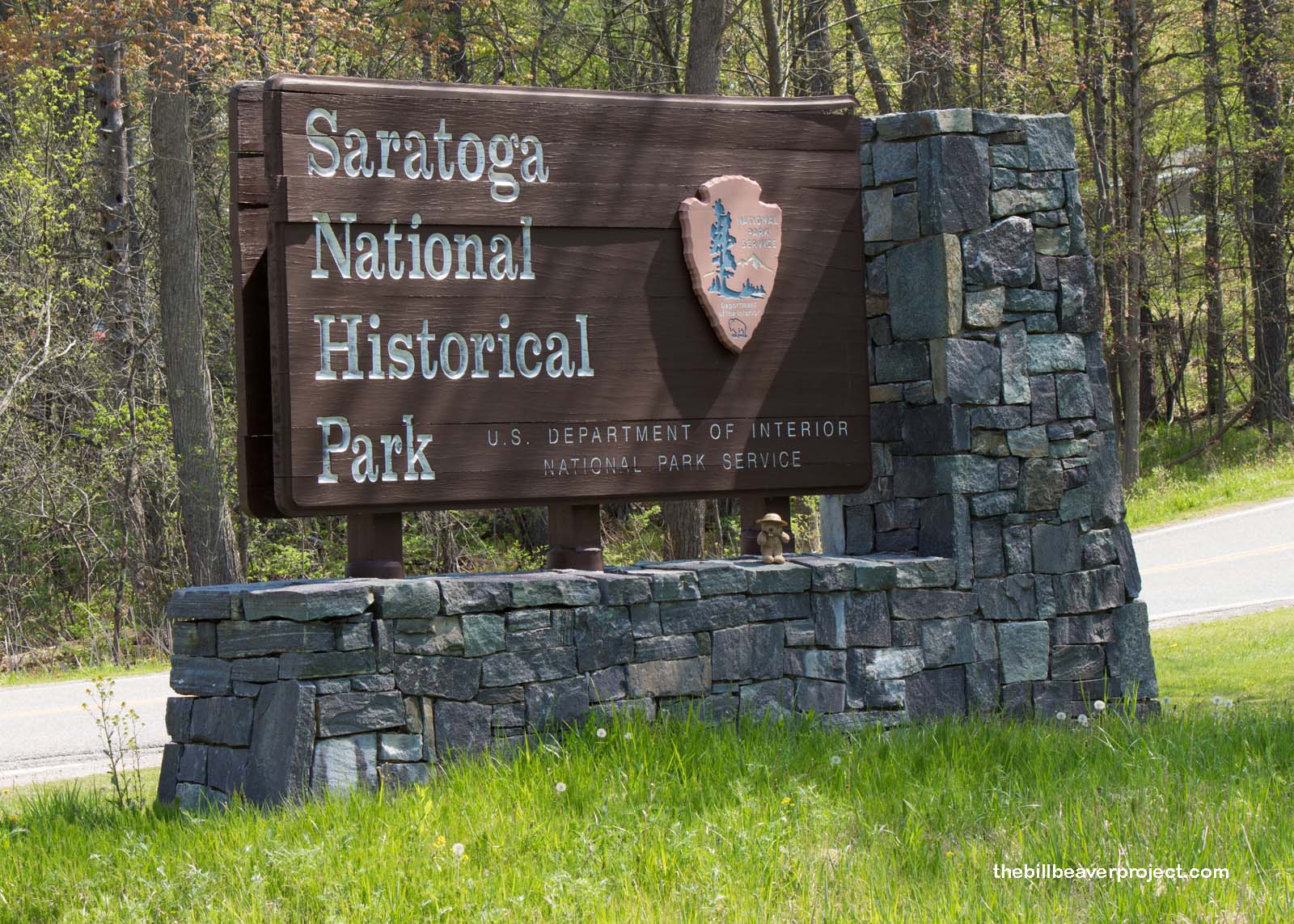 |
I set off on the 10-mile loop around this park on a day much hotter than any I’d felt up in Canada. I did kind of wish to be one of the bikers cruising by, fresh winds in their faces. But I wasn’t, so I visited the information points the automotive way, starting with an overlook of the site of Freedman’s Farm, which John Freeman left to fight for the British cause! The signs here called on the visitor to think about what it meant when neighbors chose different sides in a massive war like this!
 |
On the other hand, John Nielson, farming just down the way, joined the American side, and the Patriot Army garrisoned on his land during the battle of Saratoga. His home has been restored, while John Freeman’s has been lost to the ages!
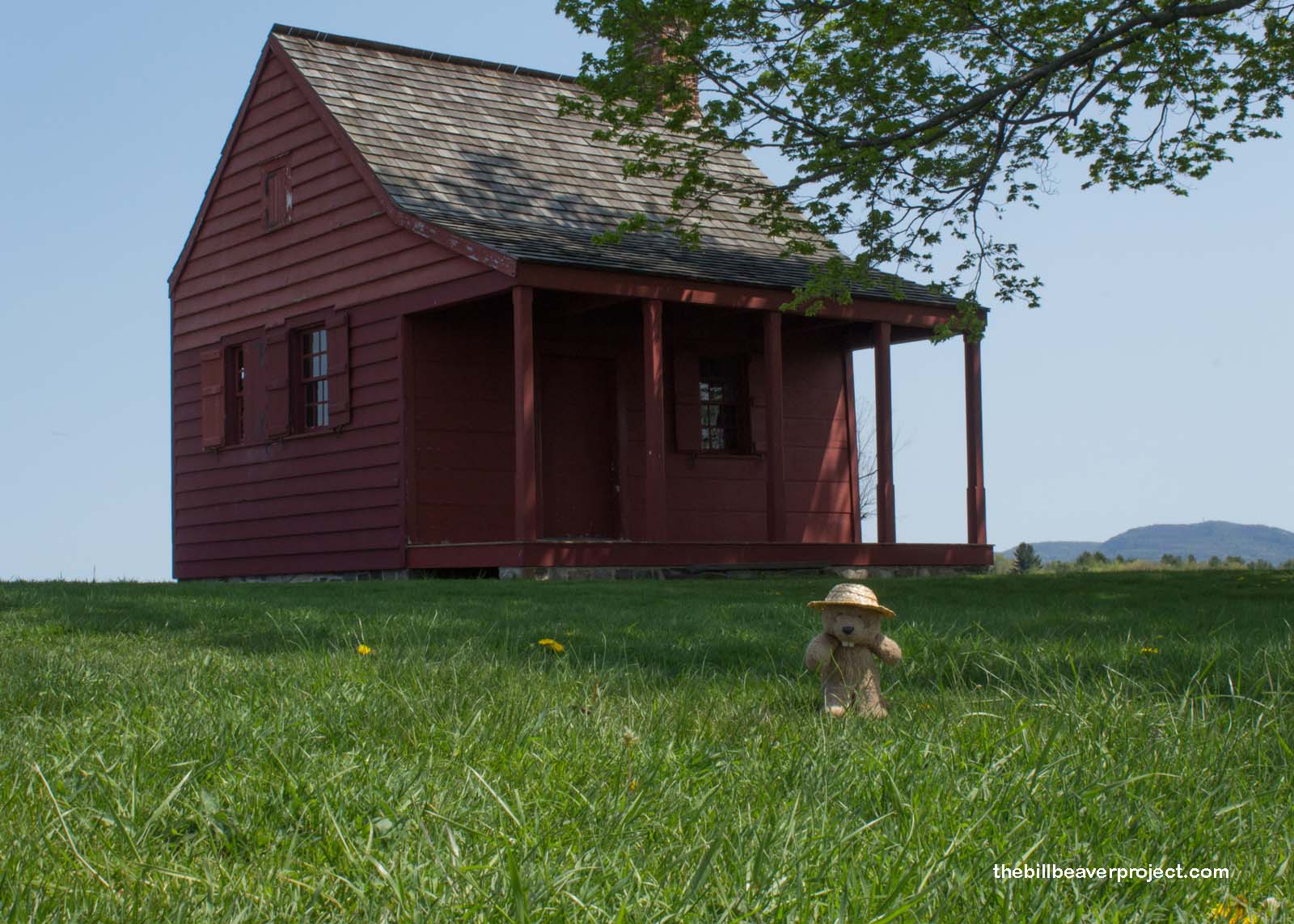 |
Also at this stop was a monument to a fellow whose name I’d seen on a street in downtown Los Angeles but never really understood: Tadeusz Kościuszko (Koh-shoosh-koh). It’s one thing to strategize an attack and defense, and another to actually engineer it. That’s where Mr. Kościuszko came in! He built the American fortifications at Saratoga, and in Philadelphia, and at West Point! His brilliance gave the American forces a surprise advantage over the better funded British!
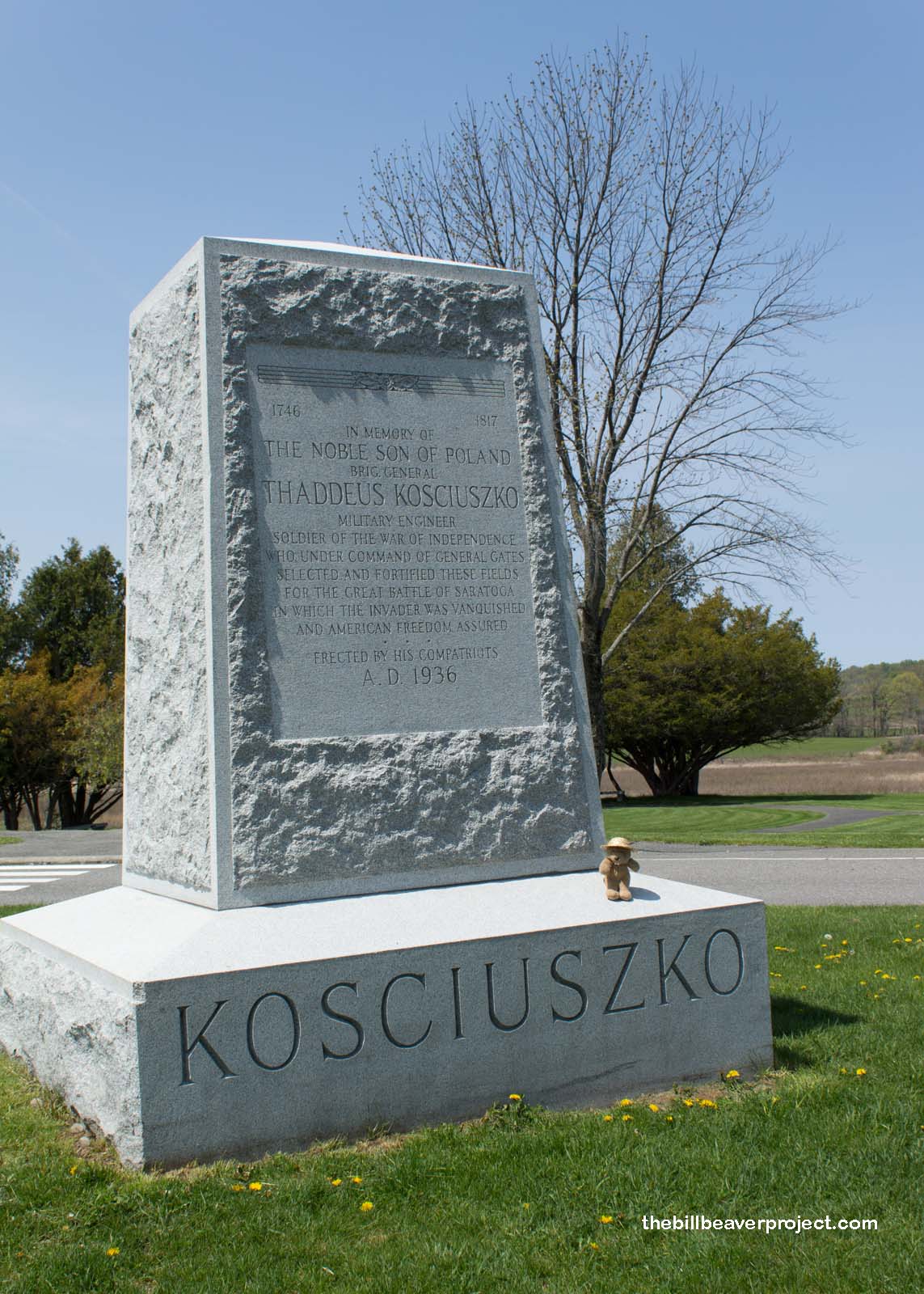 |
At the next stop, I learned another of the American army’s strategy at Saratoga! They fortified all along the Hudson River and set up redan on top of a hill. Now, in case you were wondering what is the difference between a redan and a redoubt, a redan is a V-shaped fortification that points toward an expected attack, while a redoubt is enclosed on all sides, like a diet fort! Anyway, the American redan pointed toward the river, forcing the British soldiers to lug their heavy cannons uphill through the woods, where they were readily picked off! That forced them to withdraw and regroup, a costly mistake!
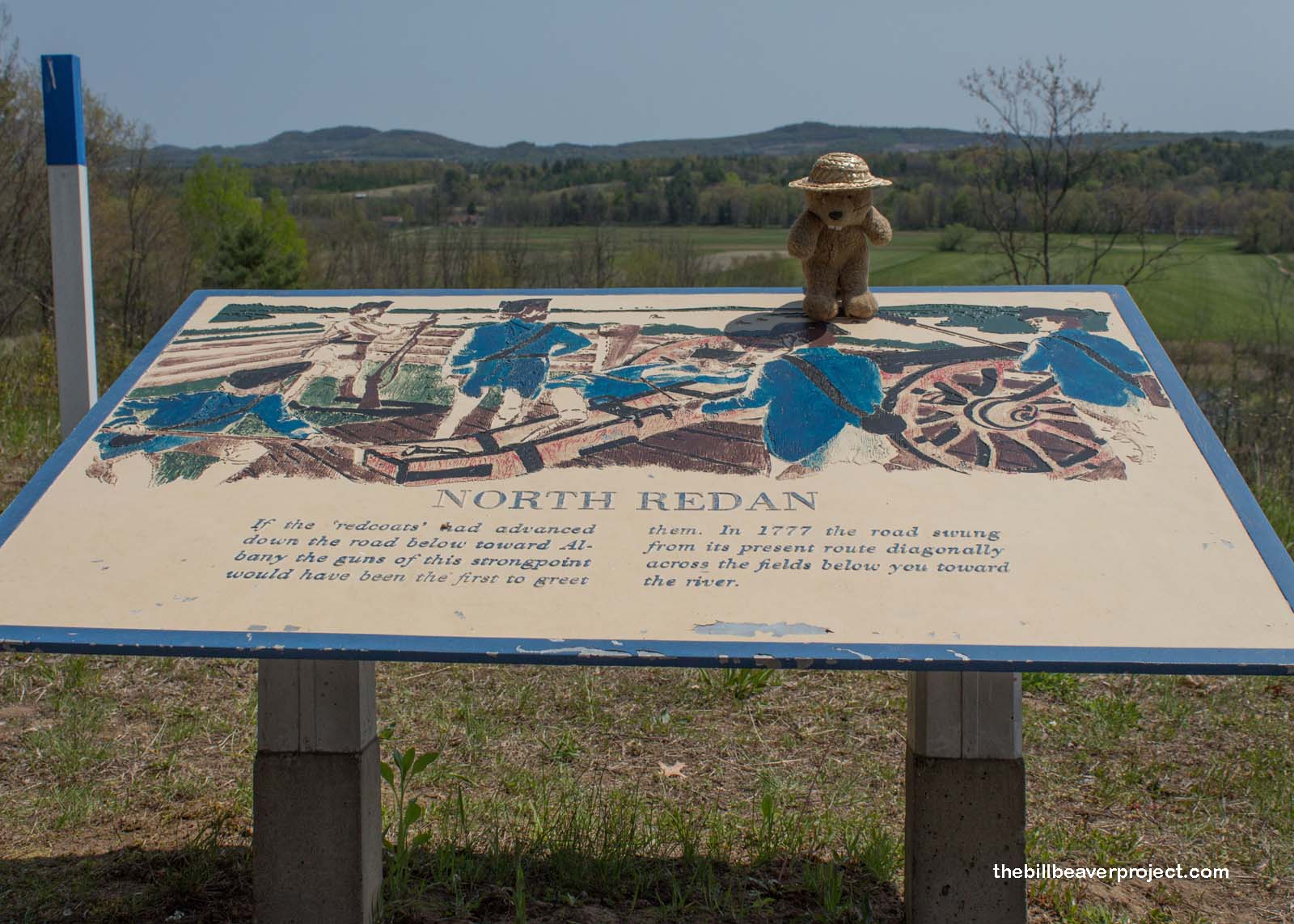 |
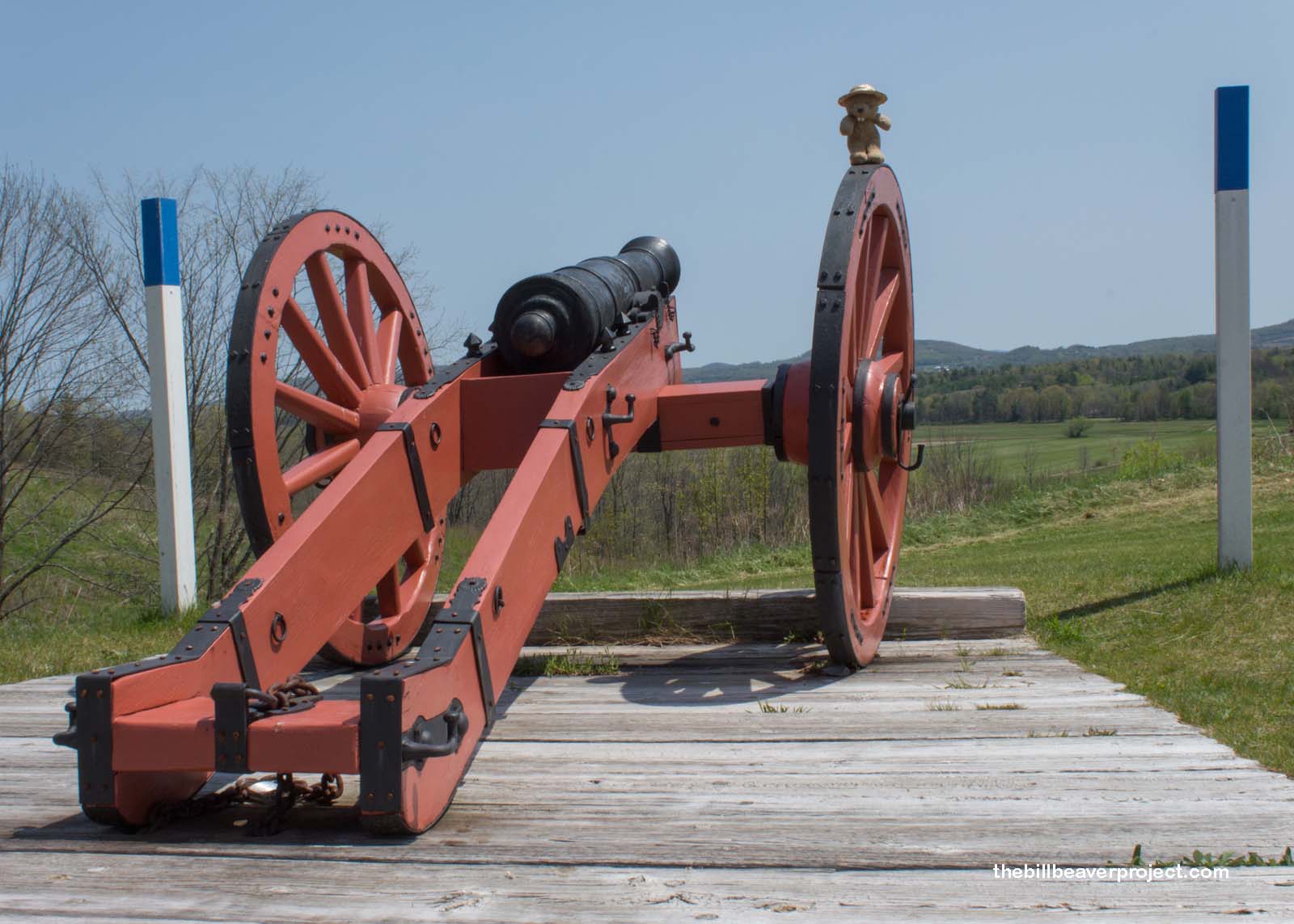 |
The Americans began to gain their advantage here at Barber’s wheat field, a clash of 4,000 combatants! In the process, British Brigadier General Simon Fraser was struck by a bullet and killed!
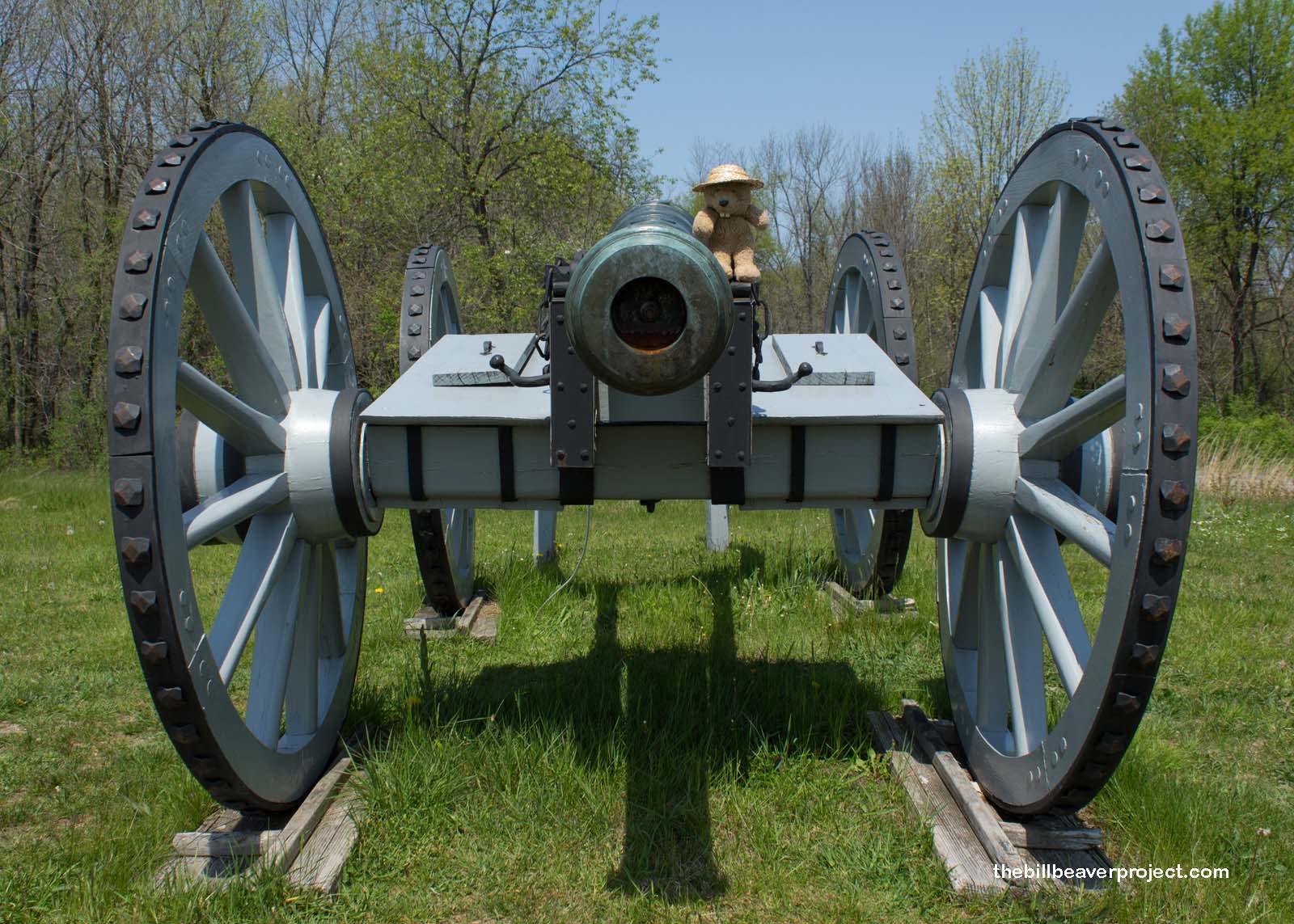 |
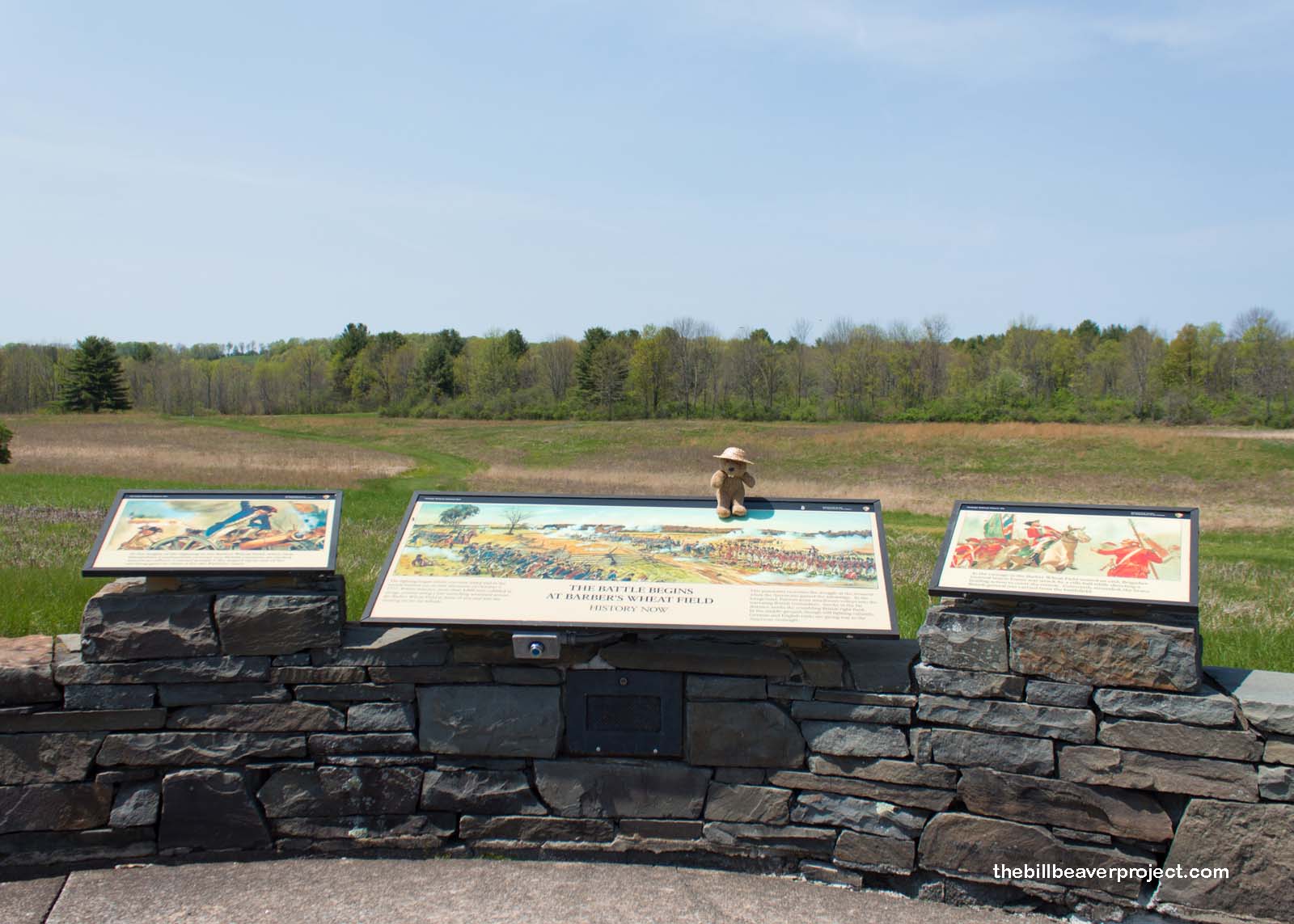 |
The Americans went on to capture Breymann Redoubt, where a number of Britain’s German allies were stationed!
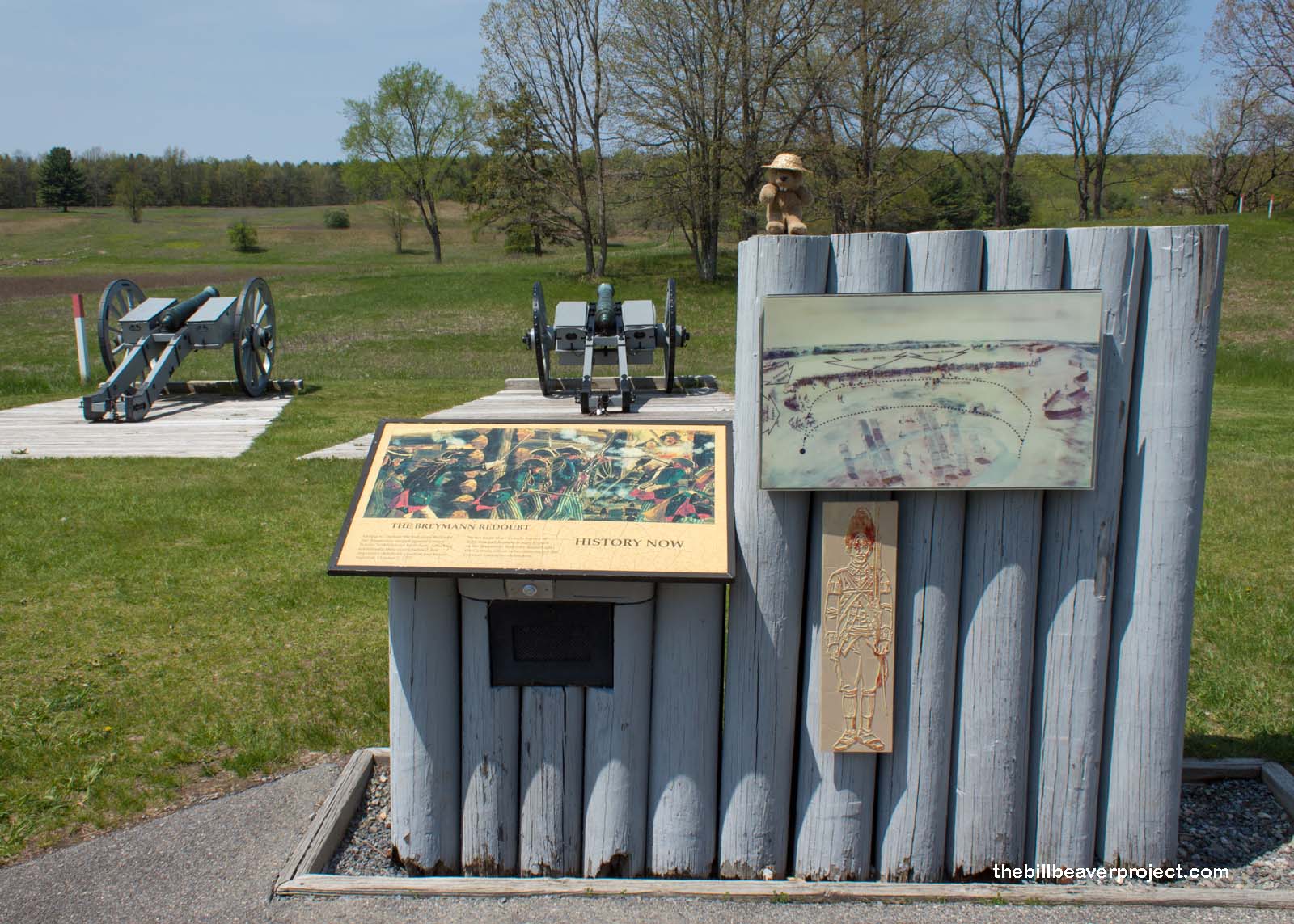 |
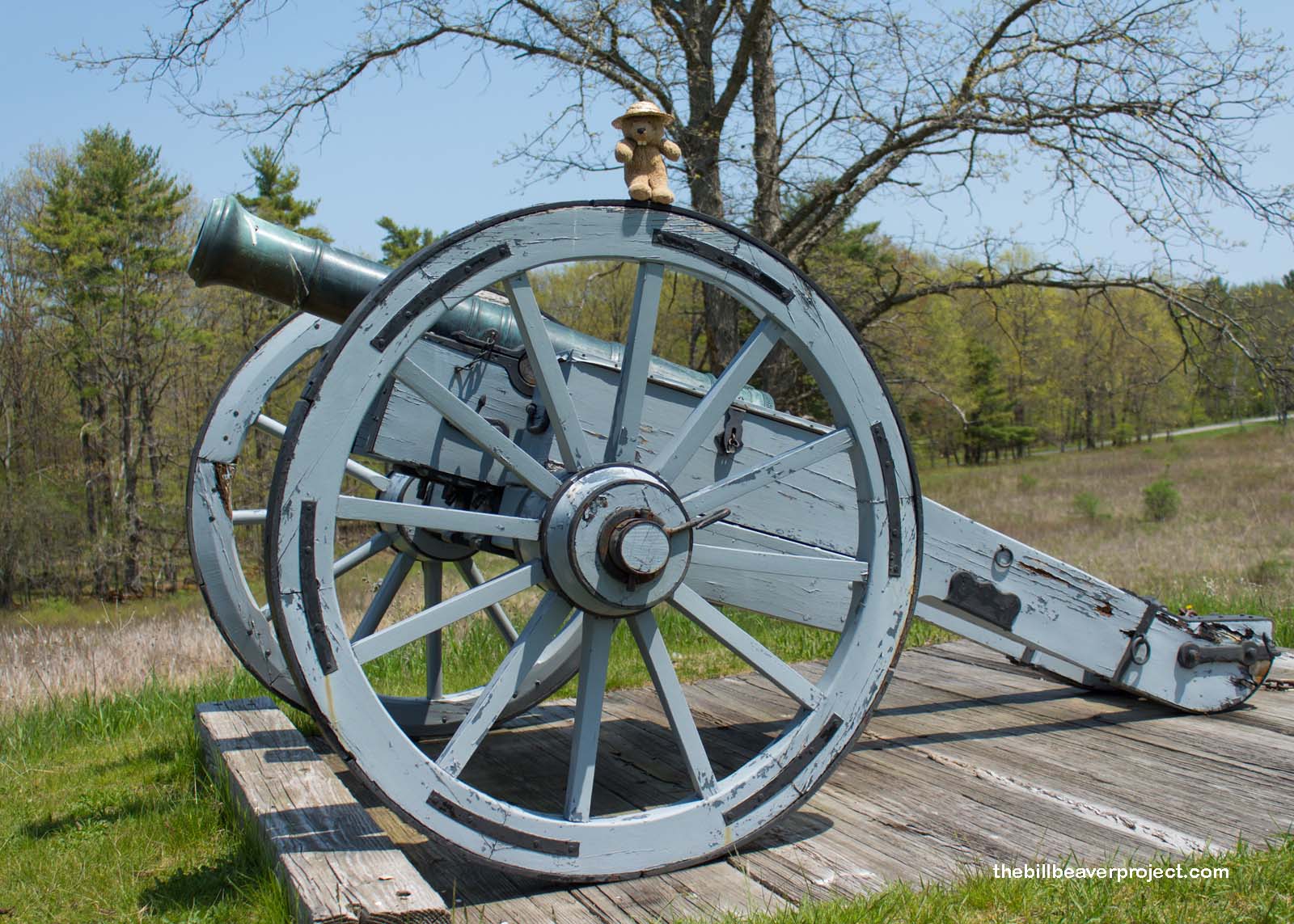 |
In this battle, Benedict Arnold got shot in the leg! A monument with a leg on it commemorates the event, even though his name isn’t actually on the monument!
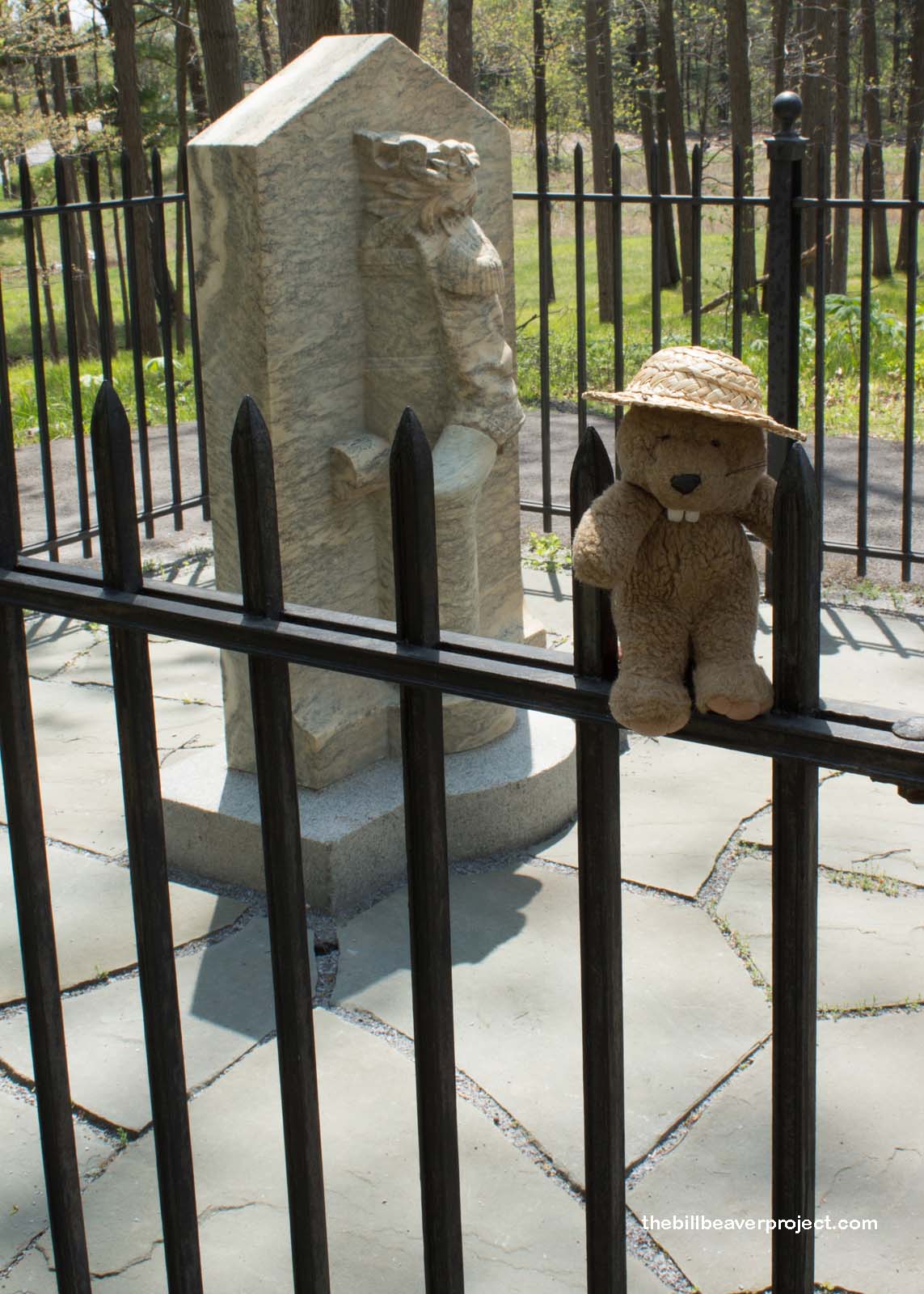 |
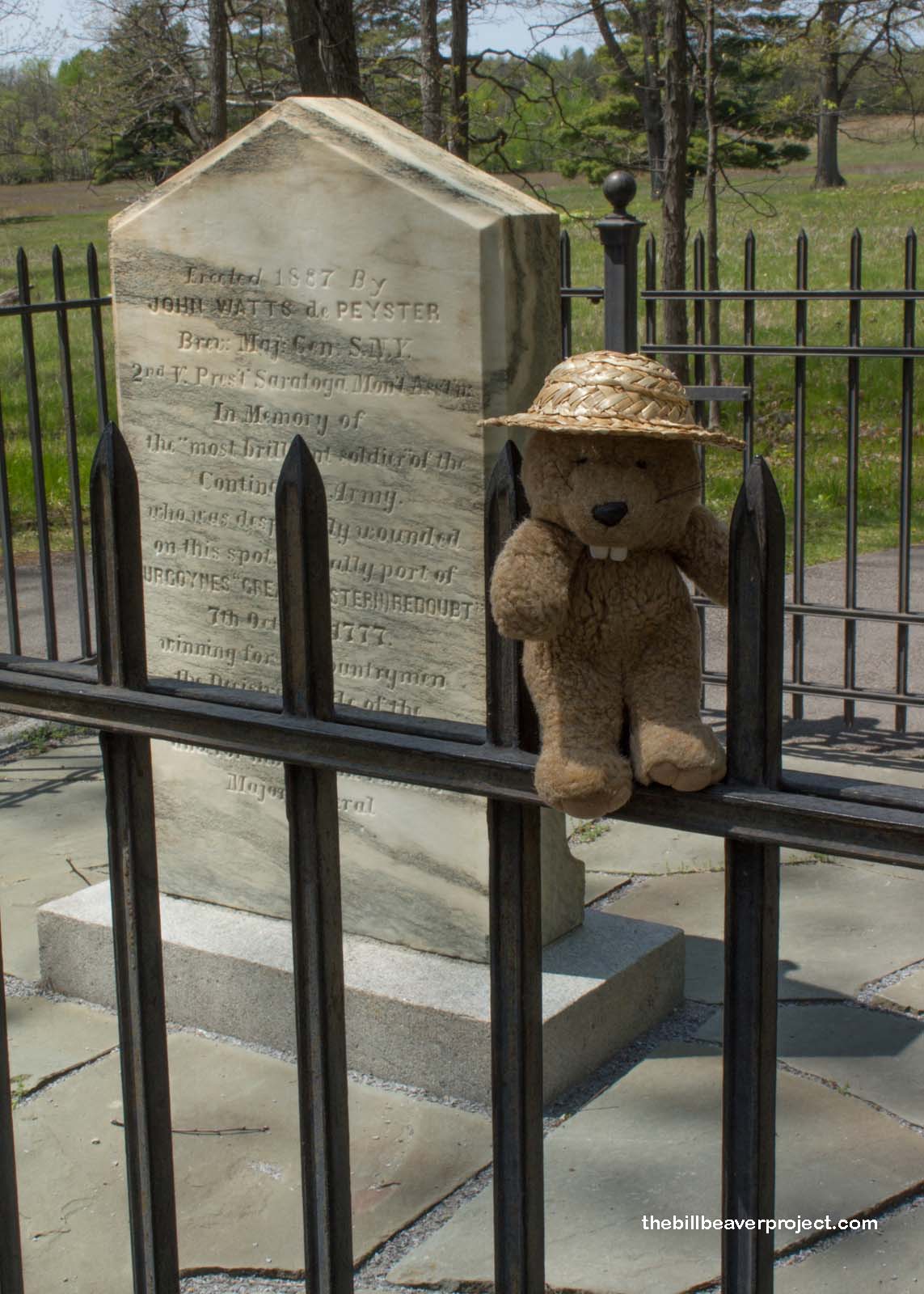 |
Not far away, I looked out over the meadow where Burgoyne’s headquarters had stood. Had I been here in 1777, I would have seen white tents as far as the eye could see, and at the center, John Burgoyne’s larger, more ornate tent. Here, British soldiers, along with their German and Native American allies, strategized for their push toward Fort Frederick in Albany, where he had planned to split the colonies. Sadly for him, but great for the Americans, he failed here!
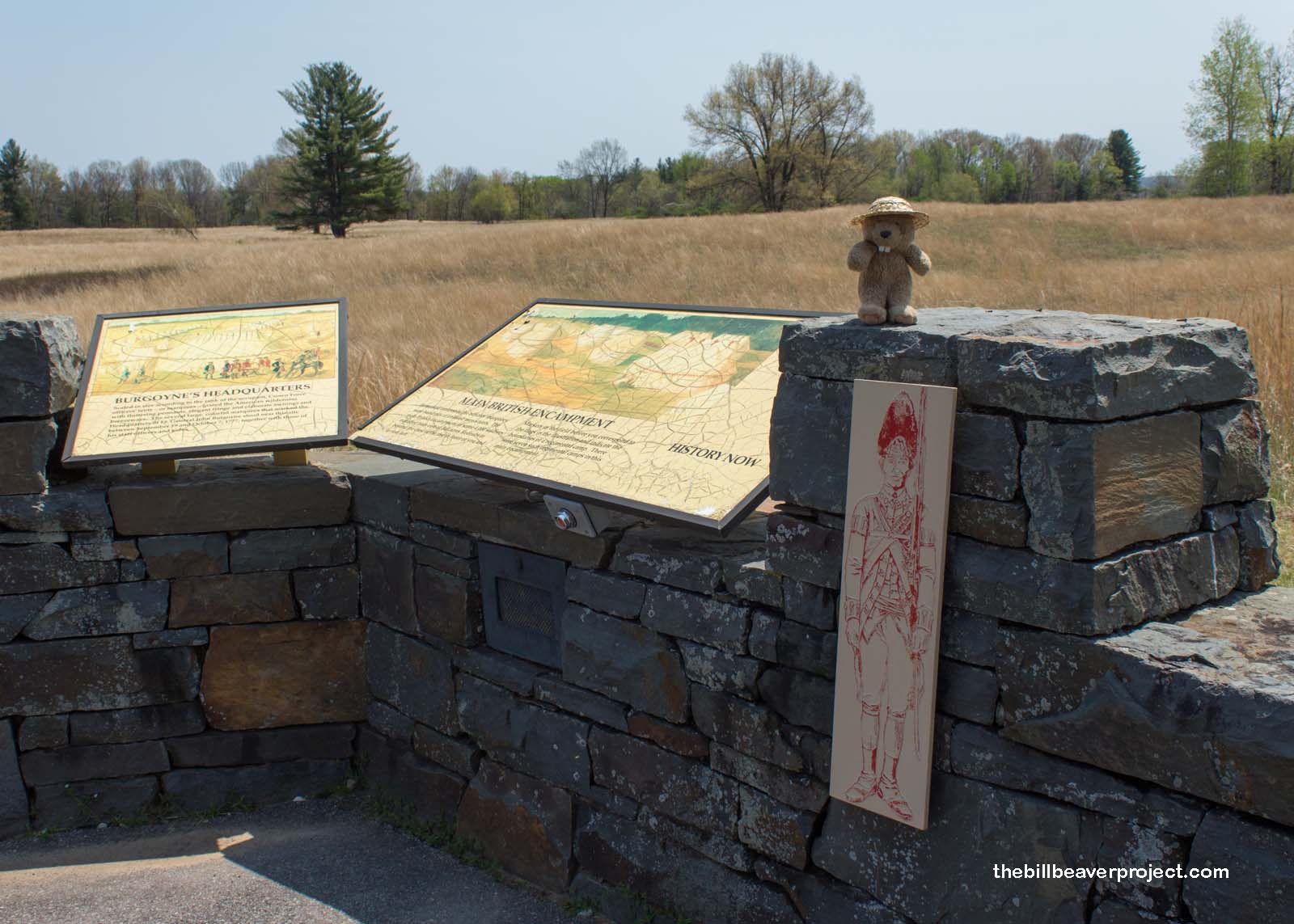 |
Here at the Great Redoubt, the British kept their hospital, artillery, boats, floating bridges, camps, and more. Like the Americans’ redan downriver, this redoubt was high on the hillside and the Americans were unable to conquer it. However, after defeat upon defeat at Saratoga, and Lieutenant St. Leger’s failure to get past Fort Stanwix and meet General Burgoyne, the battered general surrendered the redoubt and took his troops back north to Canada.
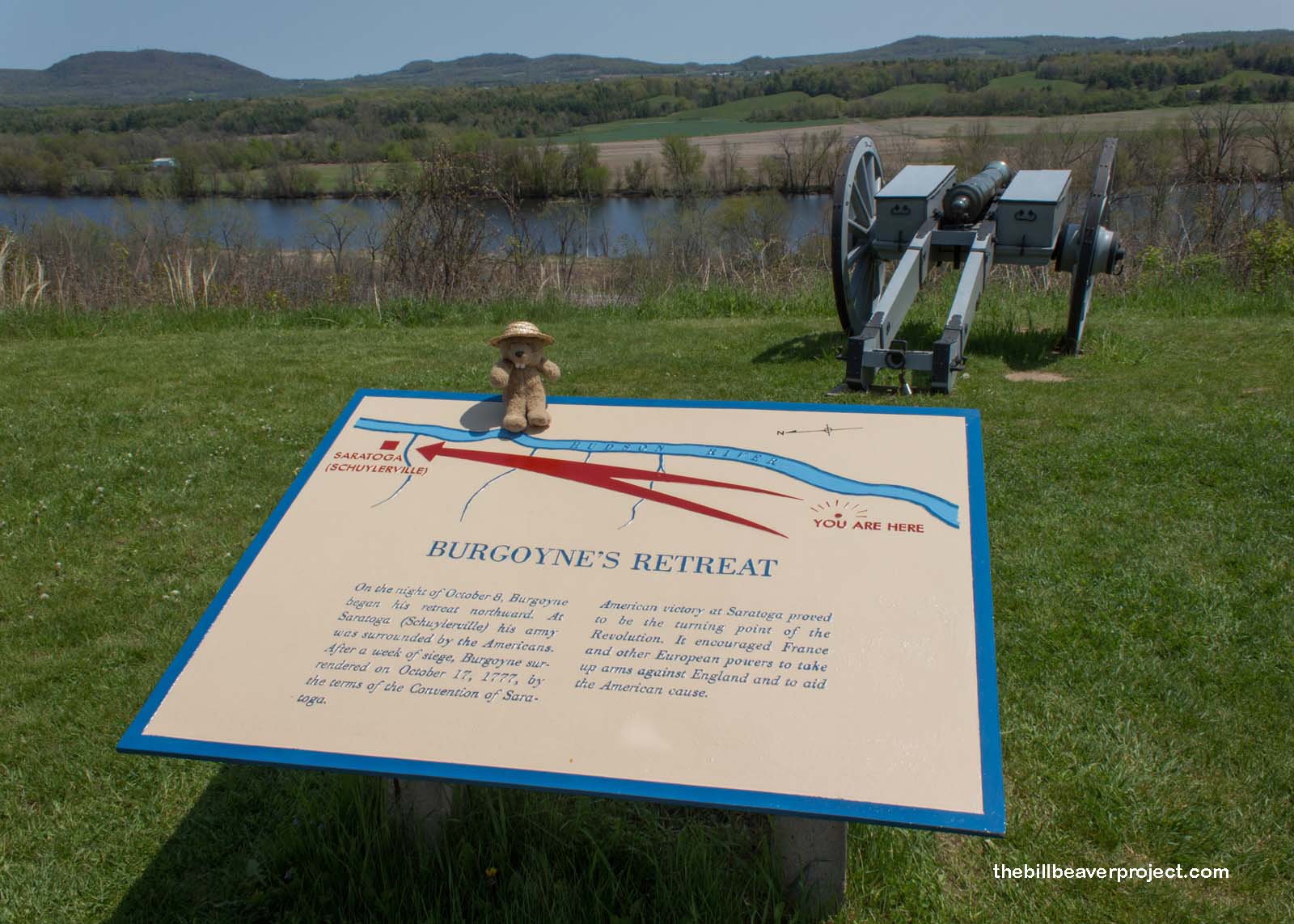 |
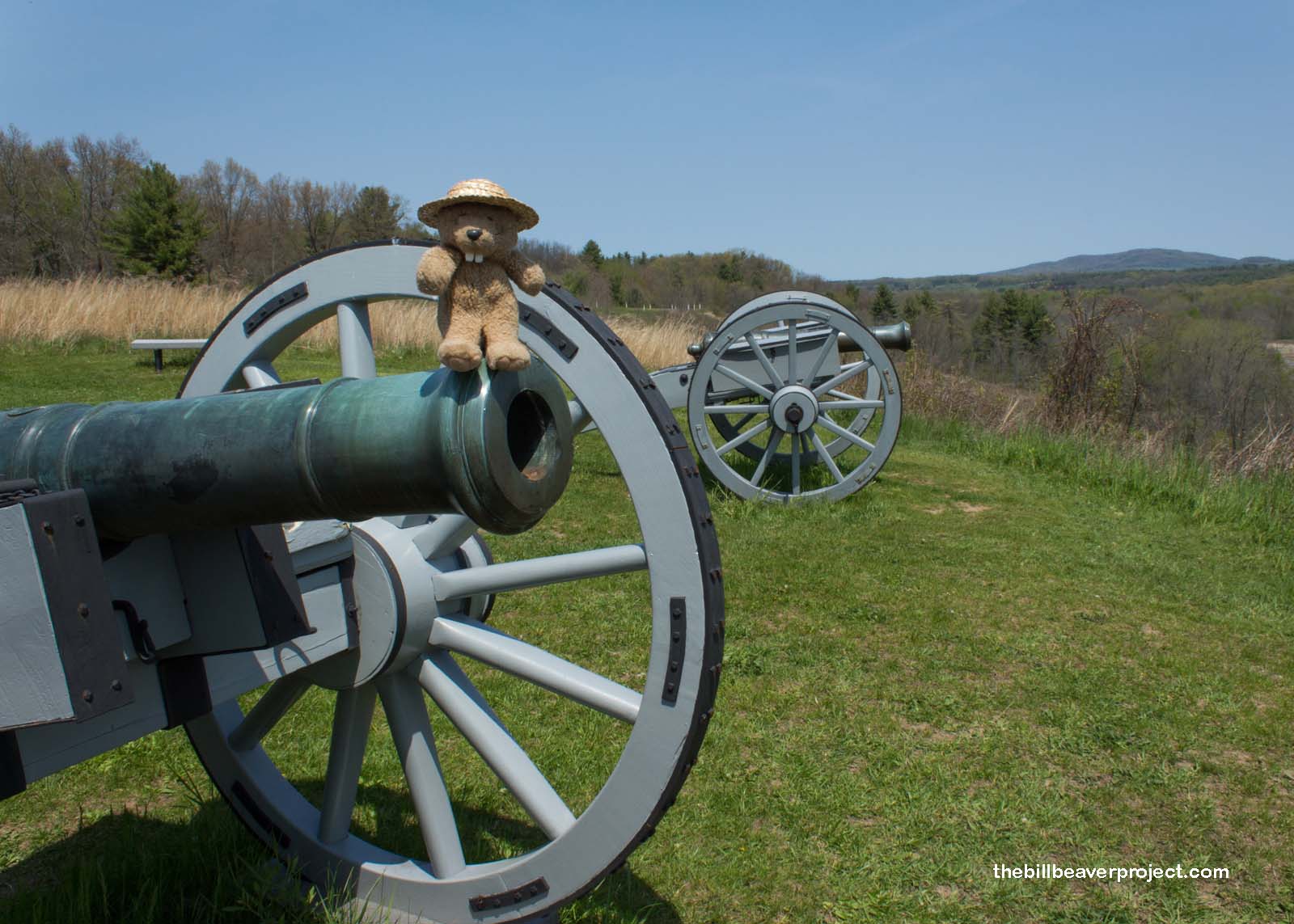 |
Along the way, they passed Philip Schuyler’s house, which they had burned so the Americans couldn’t use it as cover for an attack. Nevertheless, the British were defeated, and General Schuyler rebuilt his home within a month! General Schuyler was a brilliant military commander and strategist, the namesake of Fort Stanwix (Schuyler) during the Revolution, but his military career never fully recovered after his defeat up north at Fort Ticonderoga. Today, he is best known as the father-in-law of Alexander Hamilton!
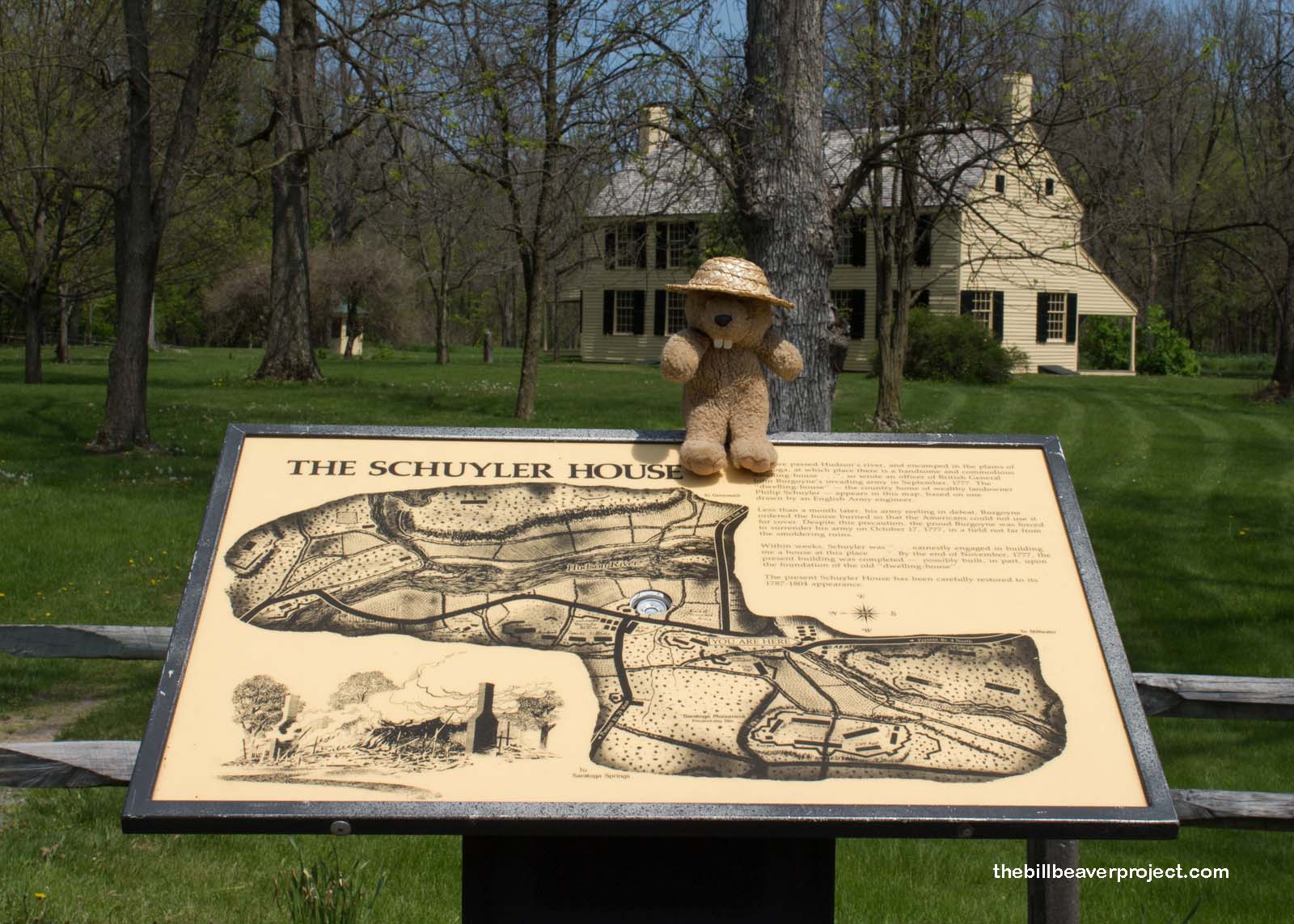 |
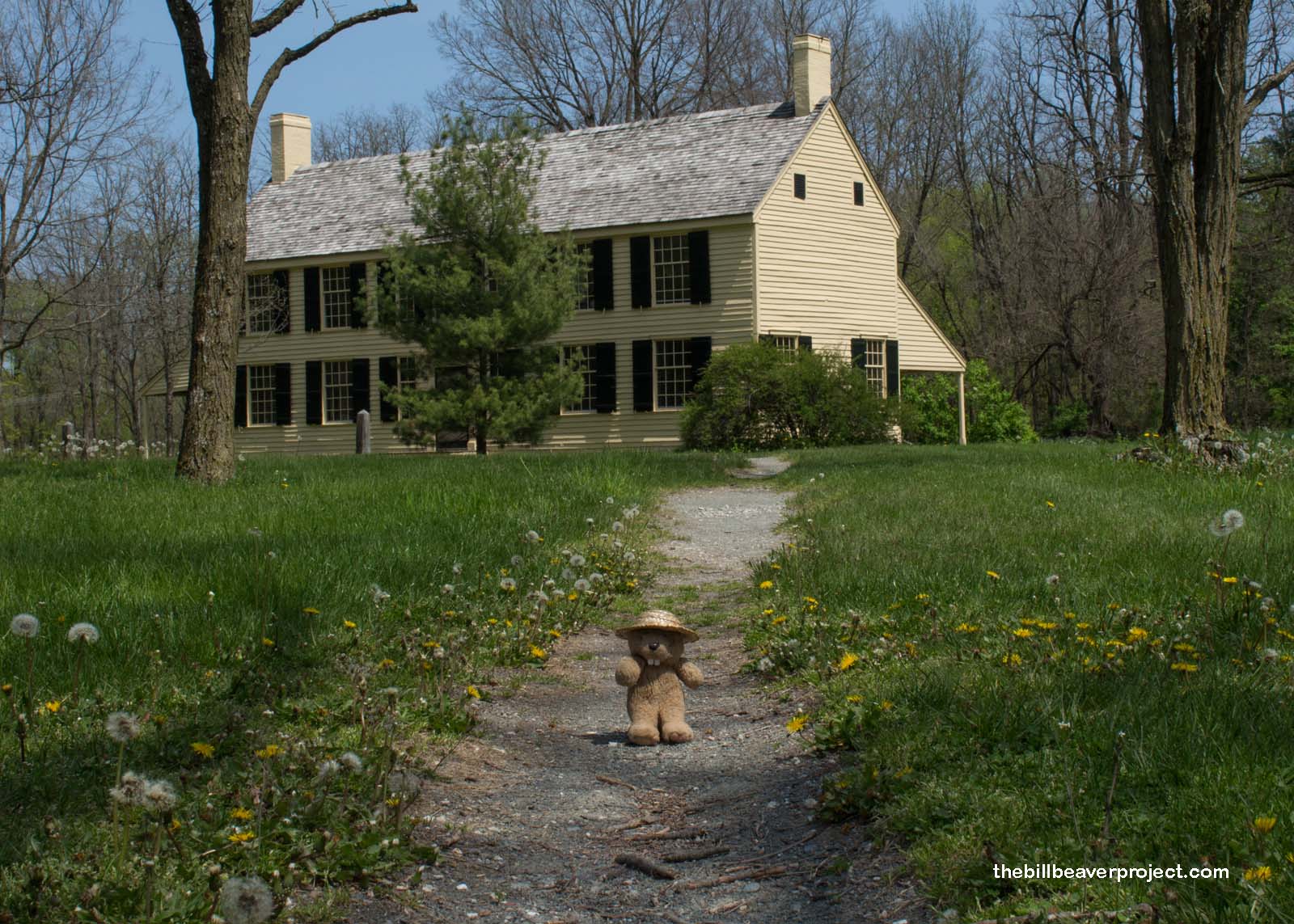 |
Finally, for this leg of the journey, I stopped off at the Saratoga Monument, a 155-foot memorial, erected to commemorate the centennial of Burgoyne’s defeat, and very near to his last encampment as he retreated! It’s a fitting monument to the American victory, and it was neat to see how folks in the 1800s honored their military predecessors!
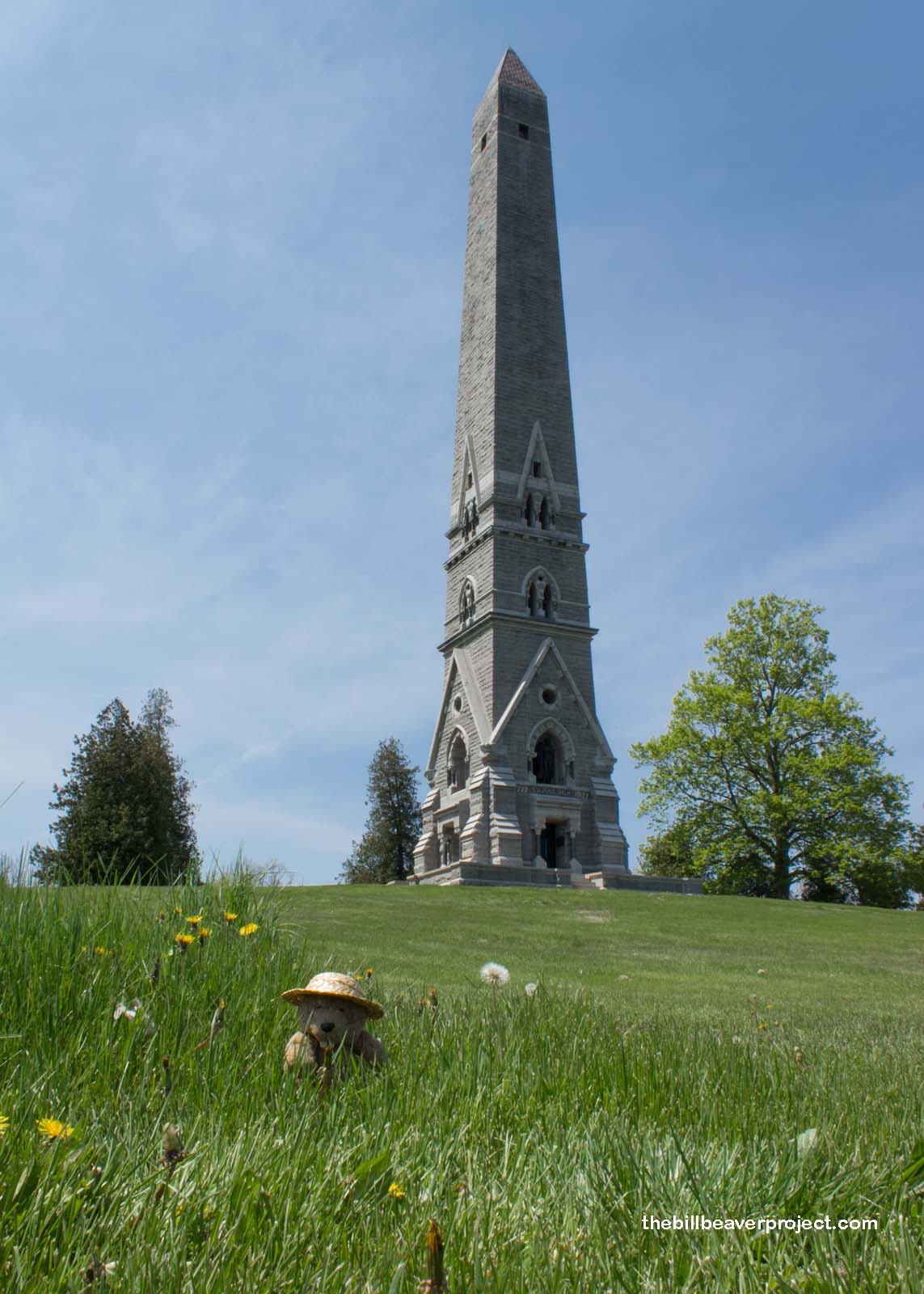 |
But the day was getting on, and I, like General Burgoyne, had to retreat from Saratoga! I had one more stop on my trip south to New York City, one steeped in ancient lore: Sleep Hollow! I had found by purest luck that the fabled home of Washington Irving was directly between Saratoga and New York City, and I would have been off my head to pass it by!
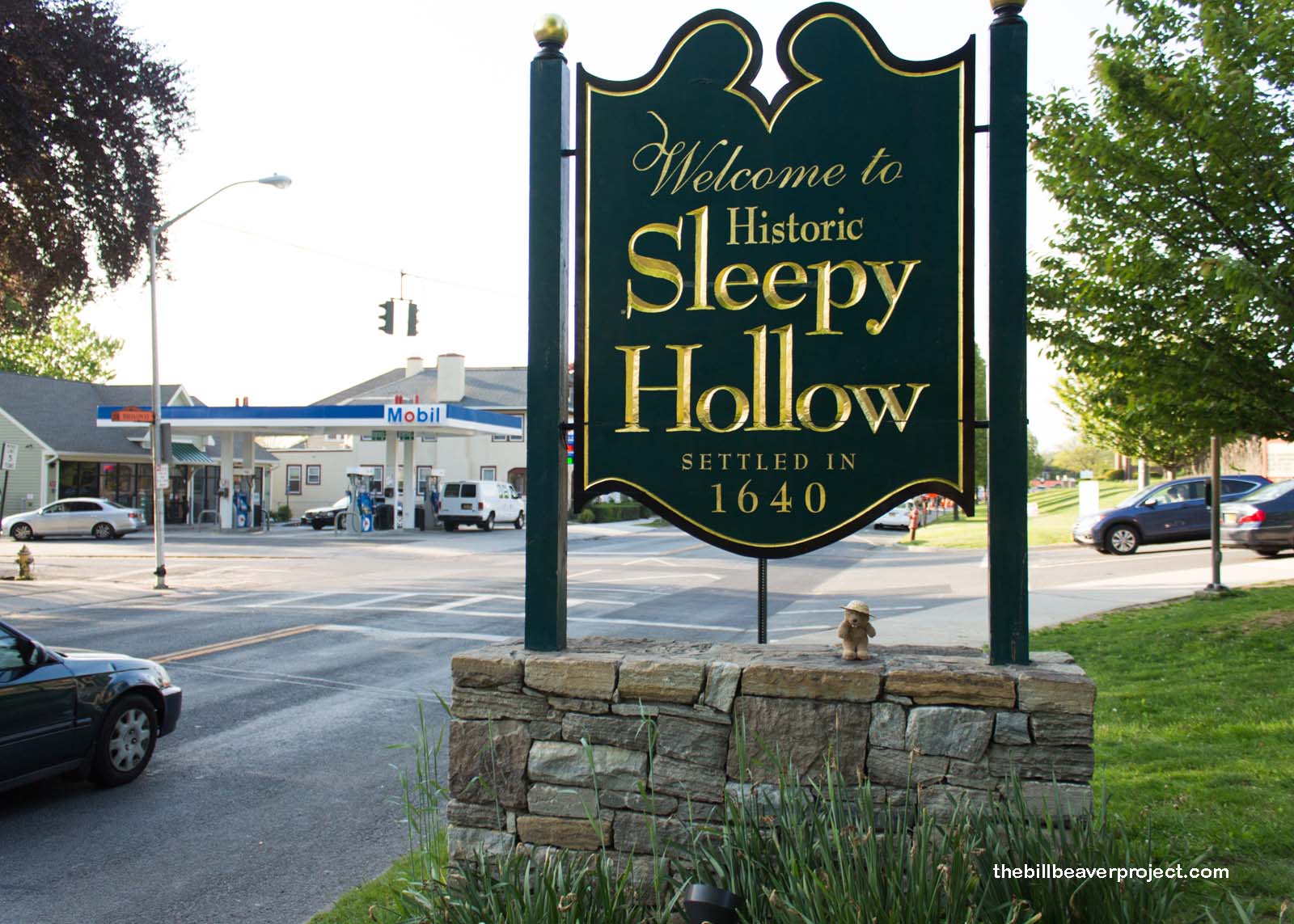 |
As you may know, Sleepy Hollow was made famous through the works of Washington Irving, whose dark tale of a schoolteacher named Ichabod Crane and his encounter with the ghost of a decapitated Hessian, has become a classic of spooky folklore! In fact, not too far from the sign welcoming me into town, I found the Headless Horseman bridge itself!
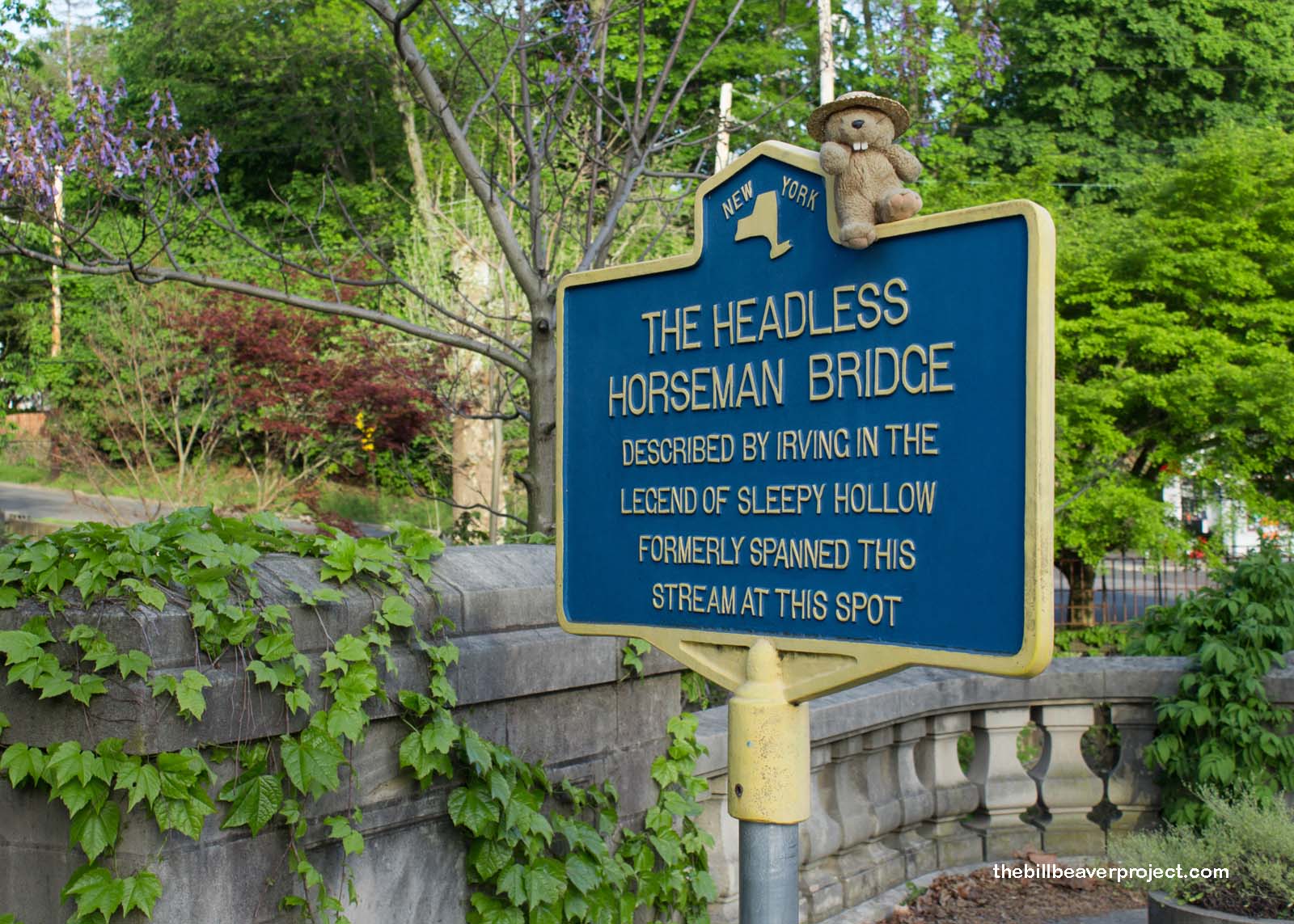 |
Technically, no one knows which bridge inspired Washington Irving to write his climactic scene of the Headless Horseman hurling a flaming pumpkin head at poor Ichabod, but this one did nicely. It overlooks the weed-choked Pocantico River, one of many pockets of mystery in what has otherwise become a pretty standard suburb.
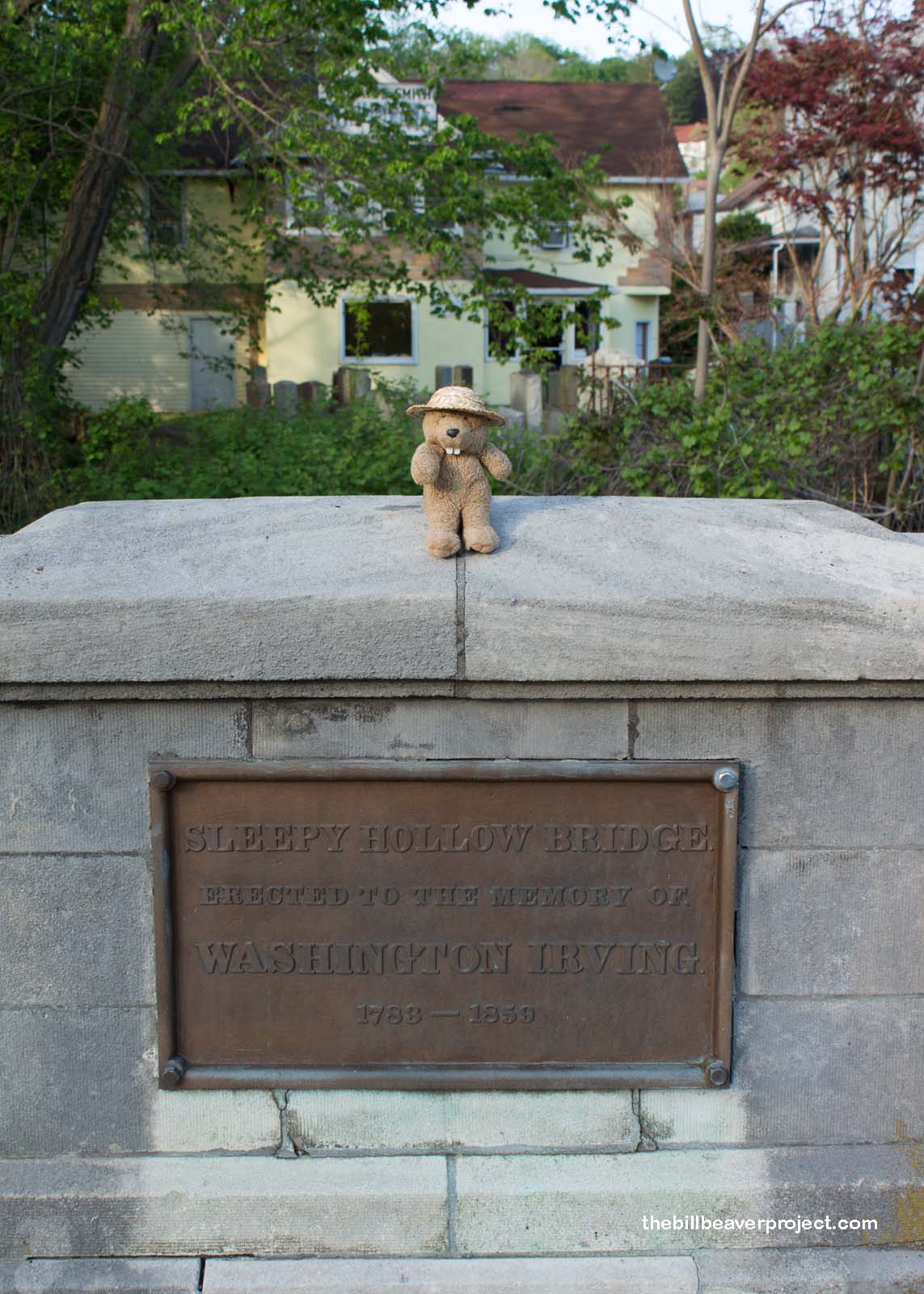 |
Just up the street is a structure much more certainly referenced by Mr. Irving in his story: the Old Dutch Church, which has been standing here since 1685! It was in the church graveyard that the Horseman was believed to be buried, that every night he rode forth in search of his head, and that he had to rush back to the church before day broke! Spooky!
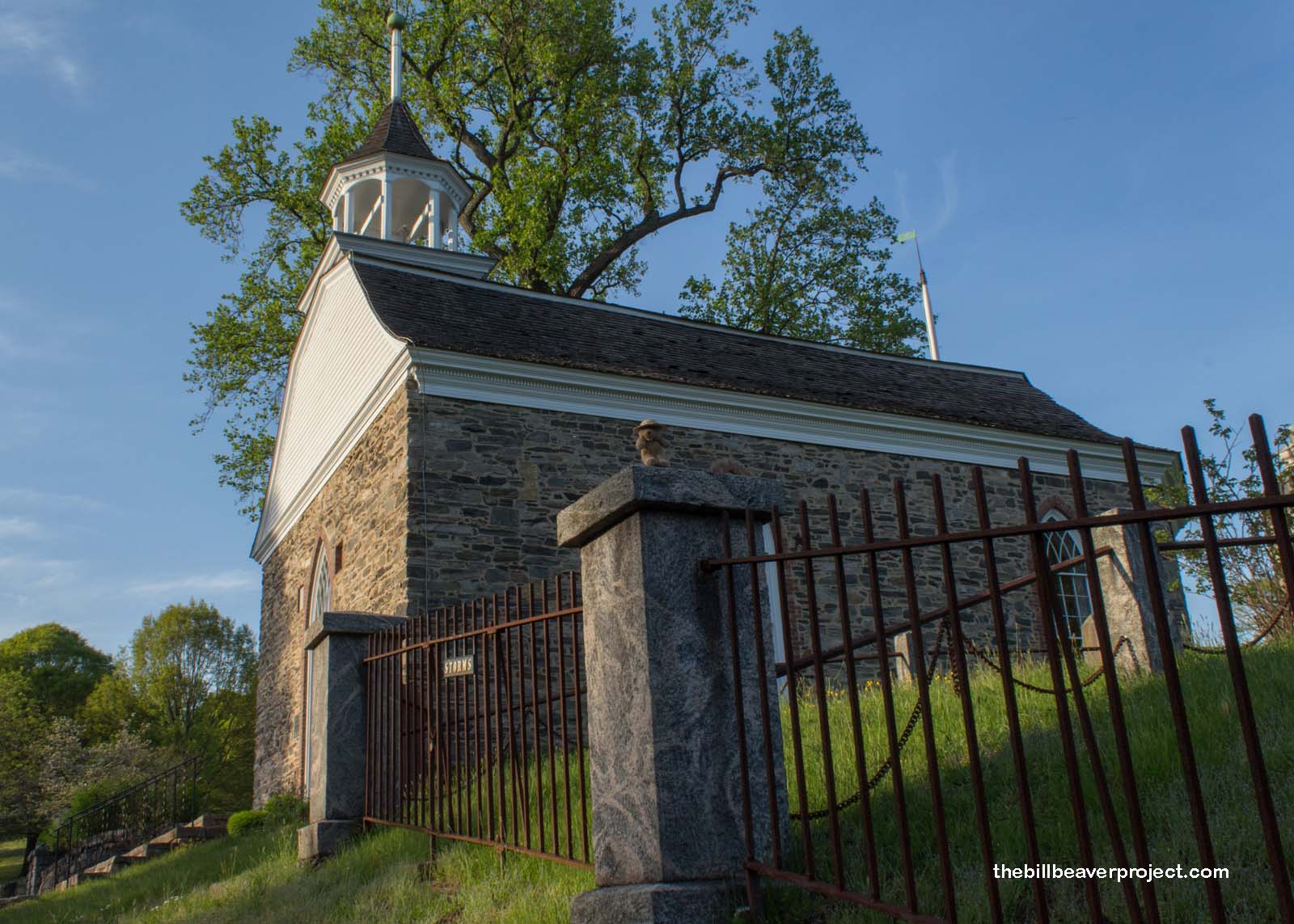 |
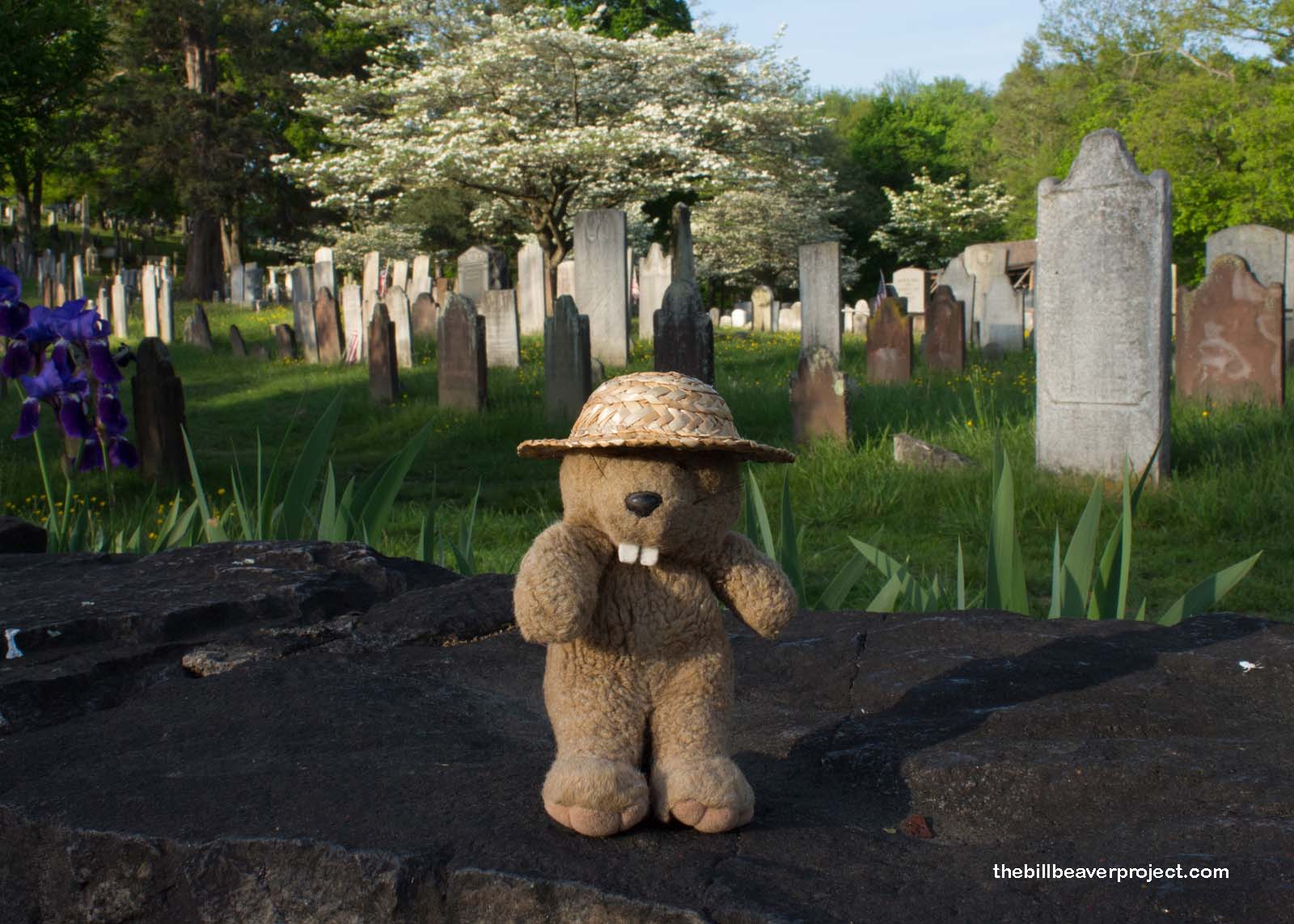 |
You can still see a dramatic recreation of the famous chase in rusty iron near the center of town!
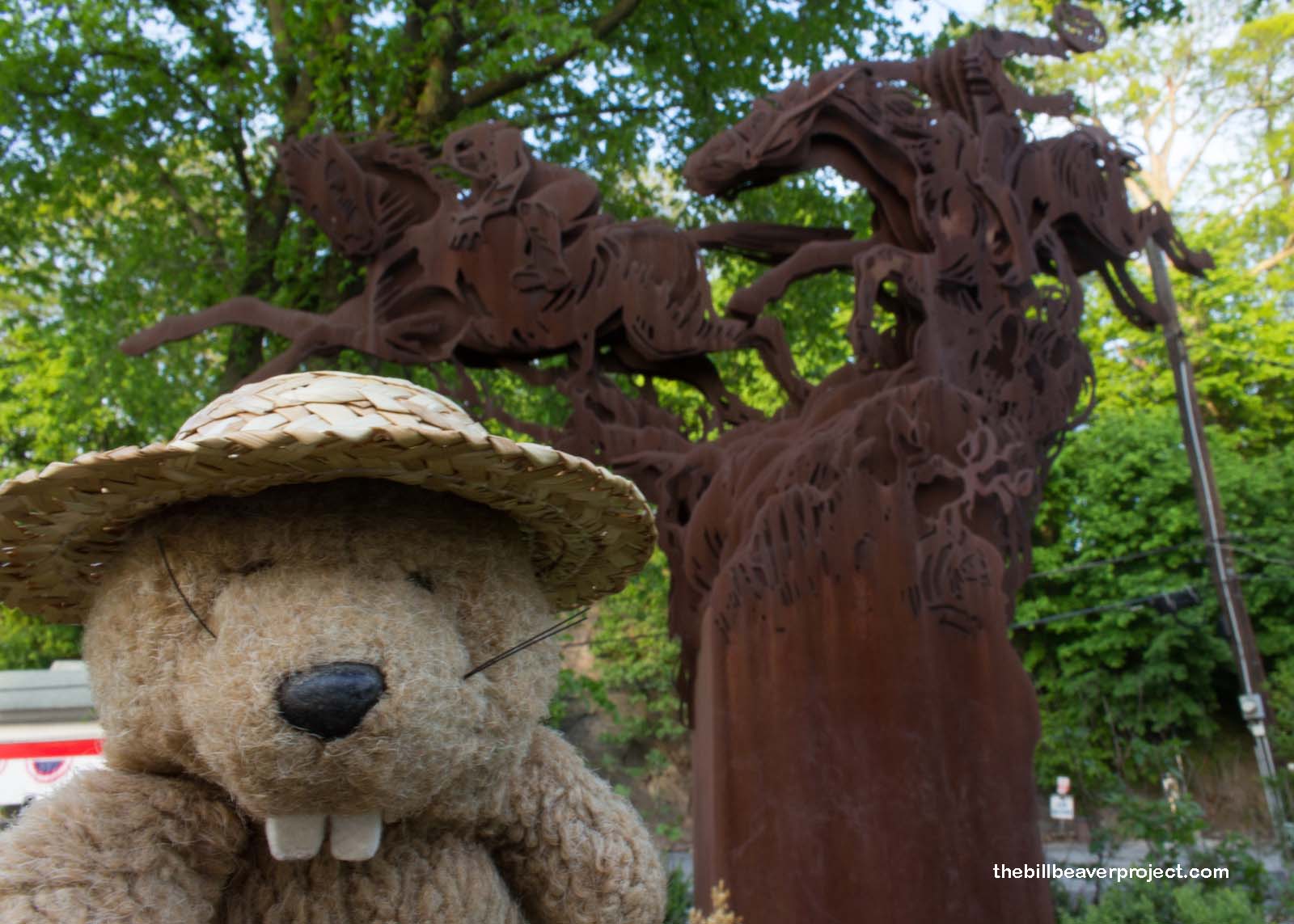 |
The sun was setting, and even though this town looked pretty tame, I didn’t think it was a good idea to be stuck in Sleepy Hollow long after dark! So, I picked my last stop for the night, the Sleepy Hollow Lighthouse! Completed in 1883, this river lighthouse warned ships away from the shoals along the Hudson River. It used to be located half a mile out on the water, but a General Motors factory on the shore filled in the land so much that now you can walk right up to the light! This neat lighthouse operated until 1961 when the lights from the Tappan Zee bridge took over lighting duties!
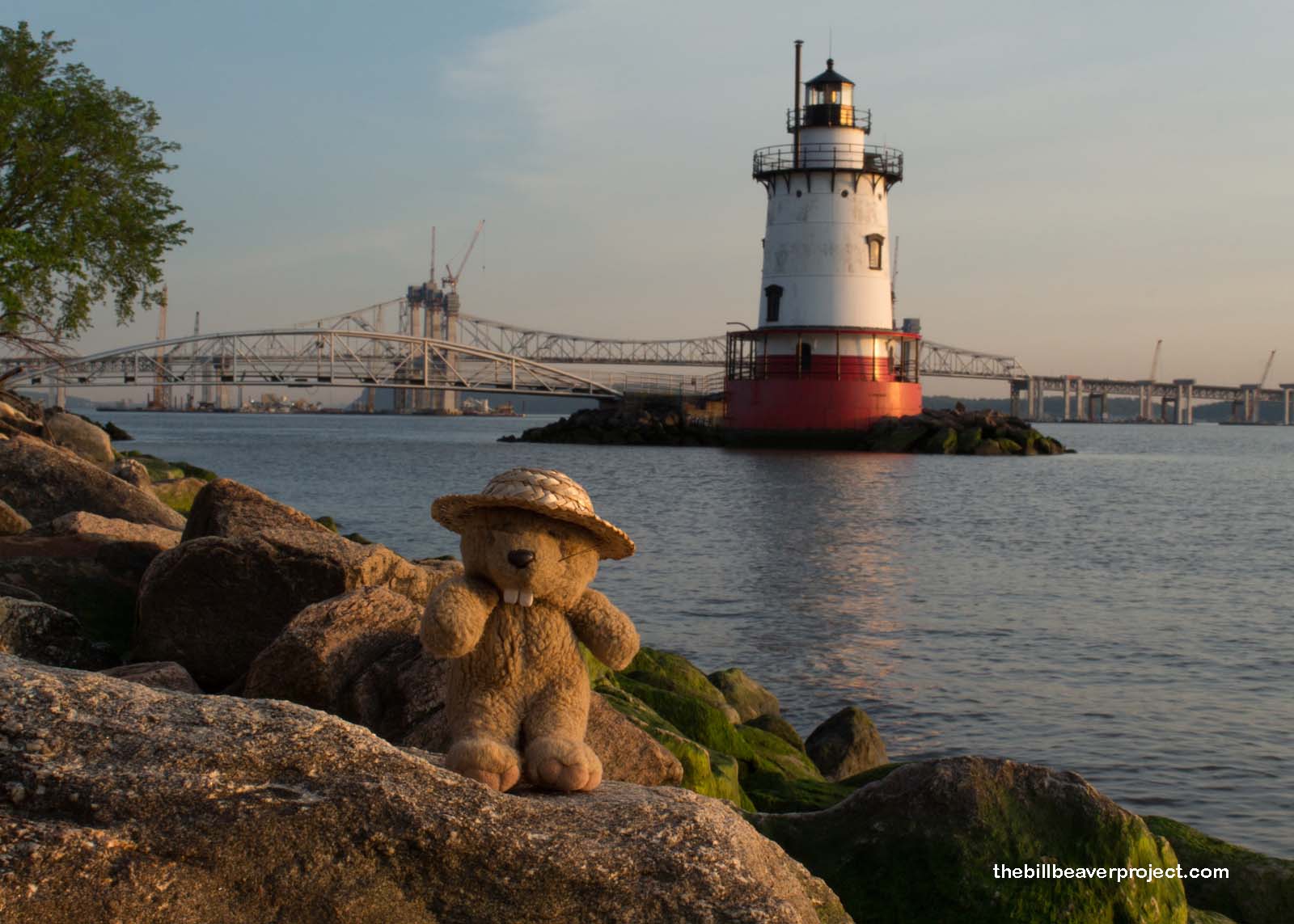 |
It was a calm end to the daylight hours but far from an end to the night! I still had to drop off the car at Newark Airport and make it to my AirBNB in Hell’s Kitchen! So, a little New York road rage, a little turnaround at Penn Station, and a long walk through the blazing lights of Times Square (No matter how many times I’ve seen it in movies, I still think this is an amazing spot), and I arrived at the dingy little apartment, where I ignored the dirt and piled up toiletries in the bathroom and lapsed into a dreamless, horseman-less slumber!
Good night!

 Previous Day |
Total Ground Covered: 1,158.5 mi (1,964.0 km) |
 Next Day |
